We love a good SUV comparison here at DiscoverAuto. Being one of the most popular bodystyles of cars in recent years, the mid-sized SUV has a powerful hold on the current automotive market in Australia. We have here what we think are two of the better mid-sizers on the market: the 2022 Hyundai Tucson Highlander Diesel and the 2022 Kia Sportage GT-Line Diesel. So which is best? Let’s find out.
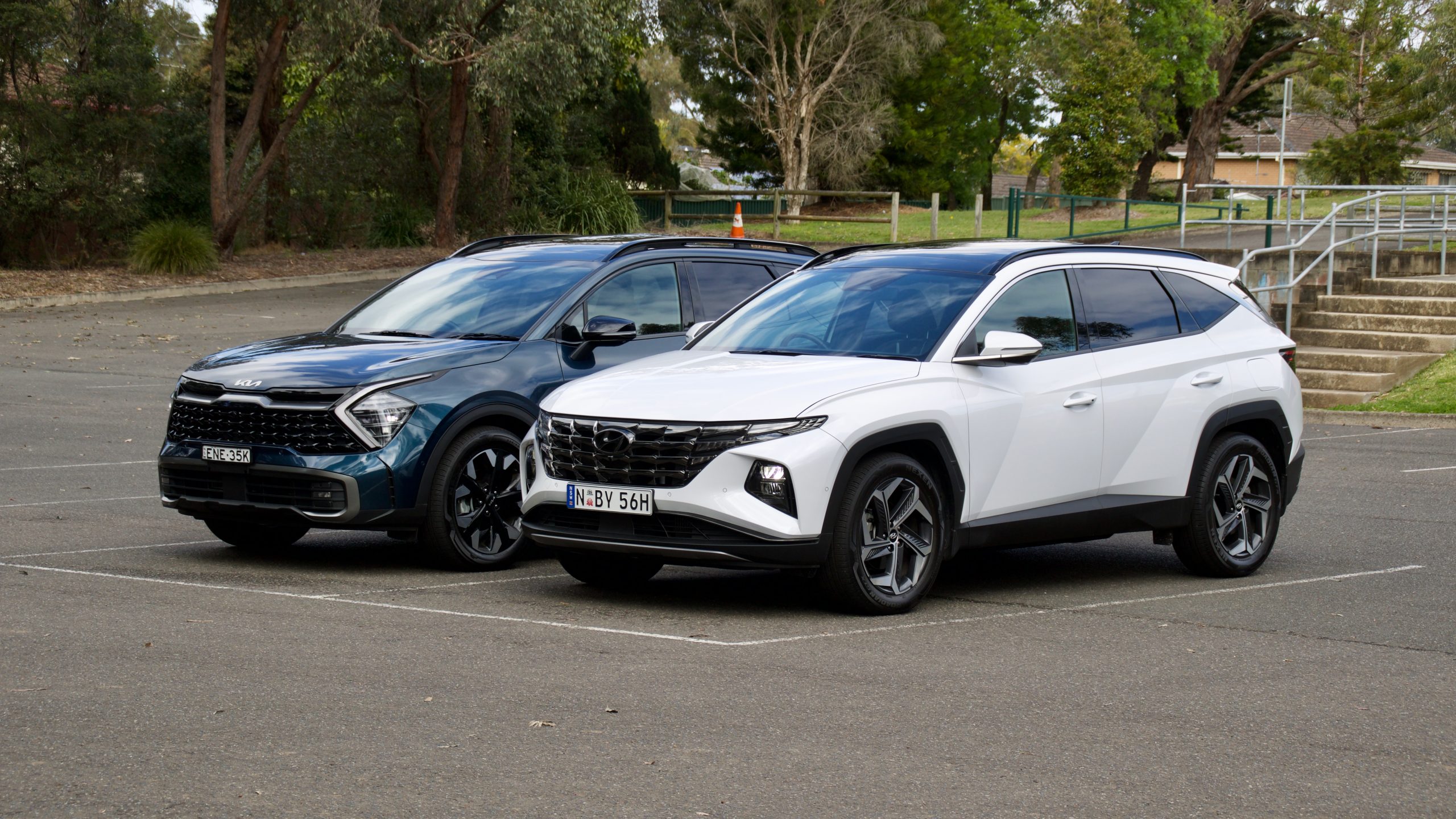
You may ask yourself, why compare two cars that share quite a lot of components? Well while this may be the case there are a large number of differences between these SUVs and it’s not as simple as it seems picking between the two. Both cars are all-new models which have launched in the last 18 months and are definitely the most modern in the segment. Both are also great options in the medium SUV segment.
Price & Equipment:
In both of their respective ranges these models are the top-spec variants fitted with their optional diesel engines. Pricing for these SUV’s could not be closer if they tried. The Kia Sportage GT-Line diesel costs $52,370 plus on-road costs ($57,205 drive away in New South Wales) and the Hyundai Tucson Highlander diesel is $52,400 plus on-road costs ($57,144 drive away).
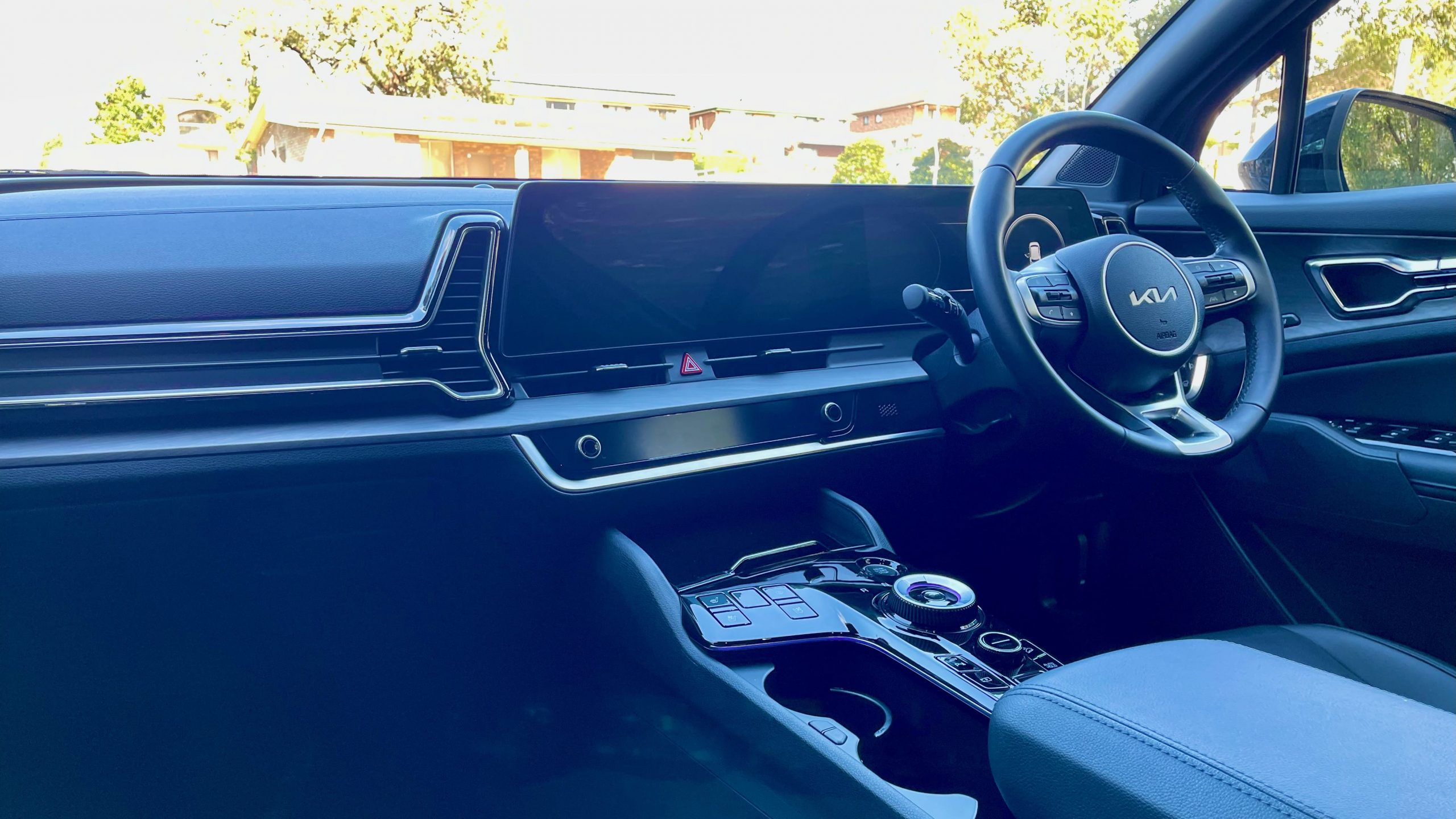
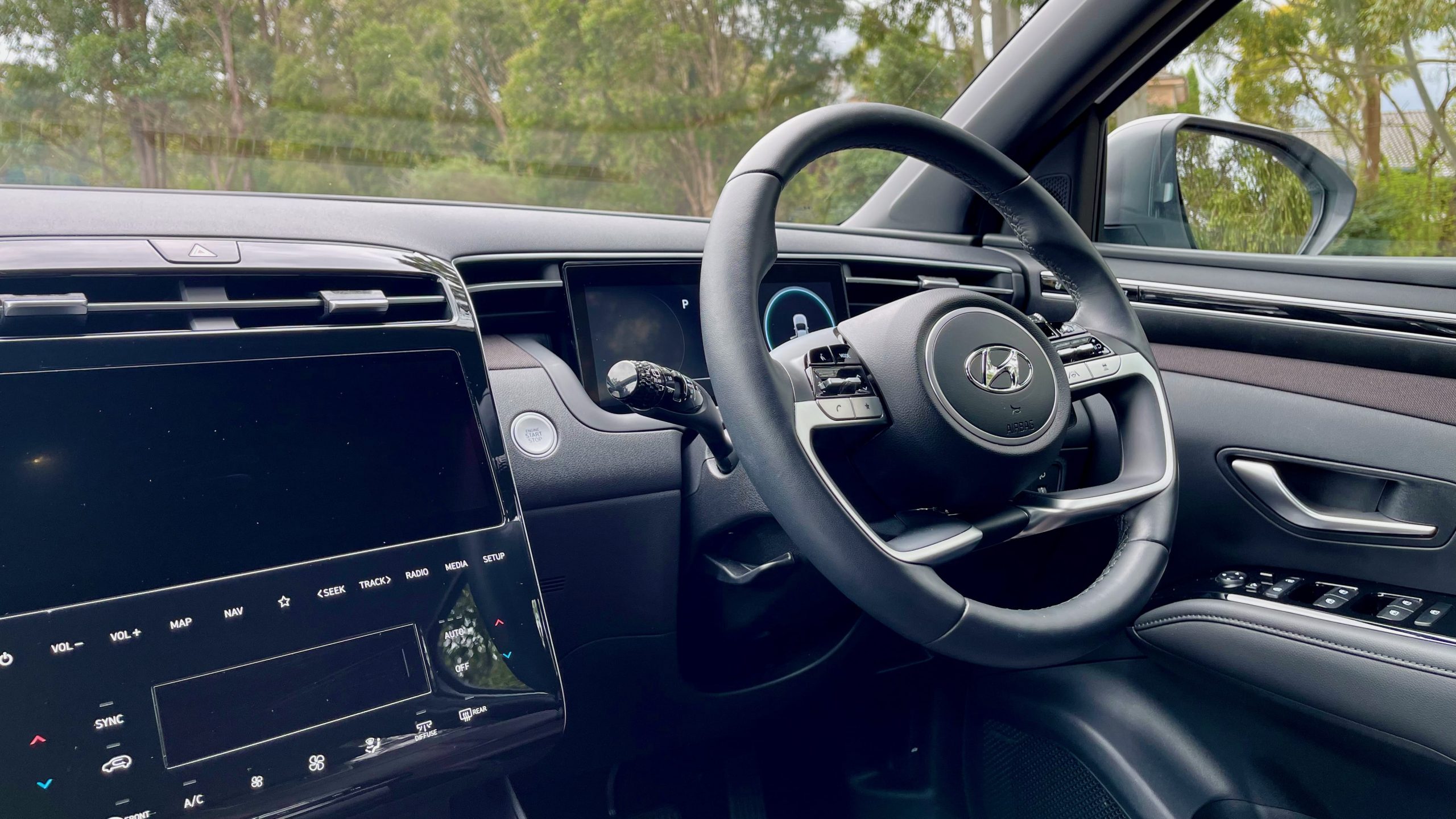
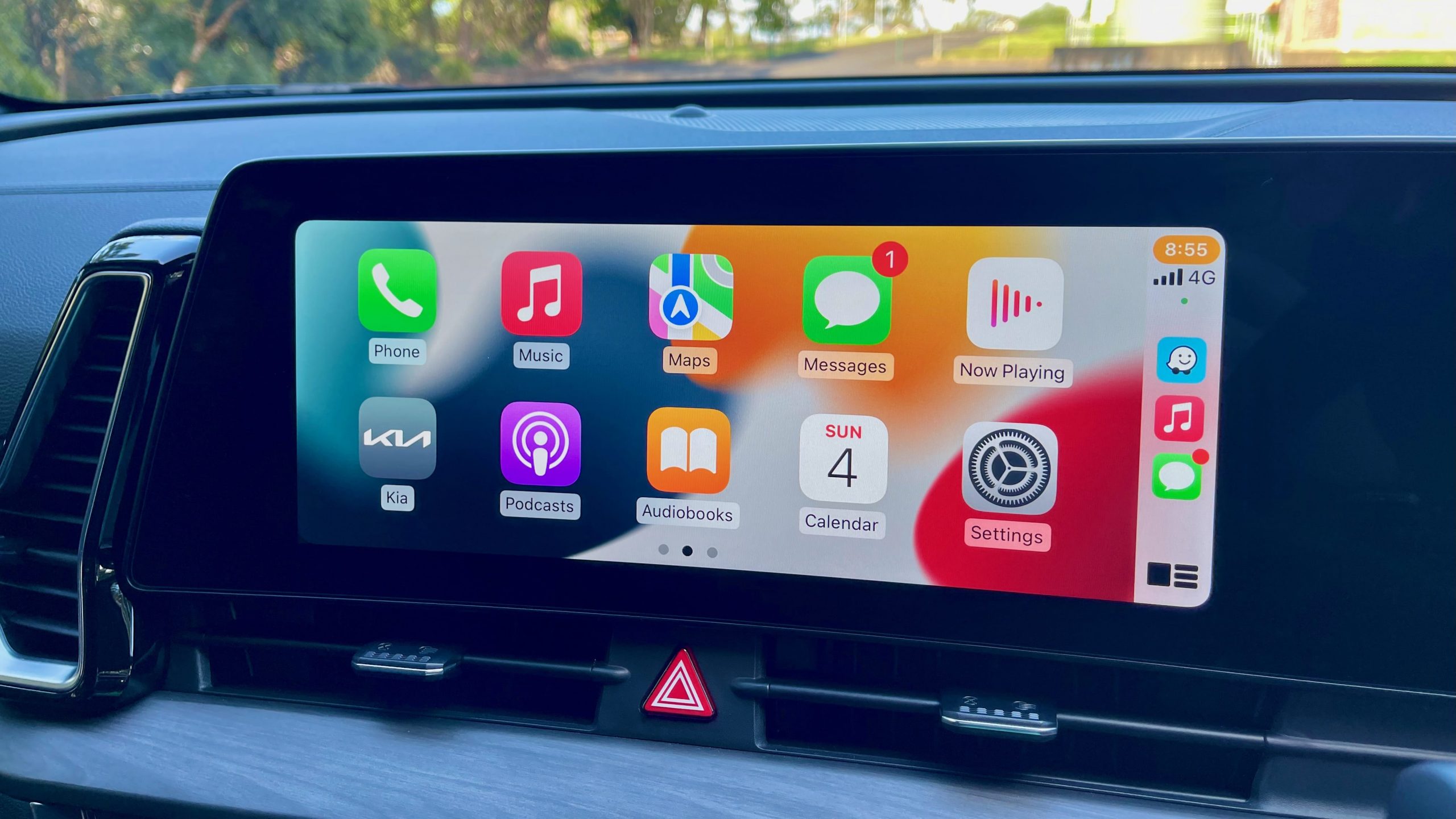
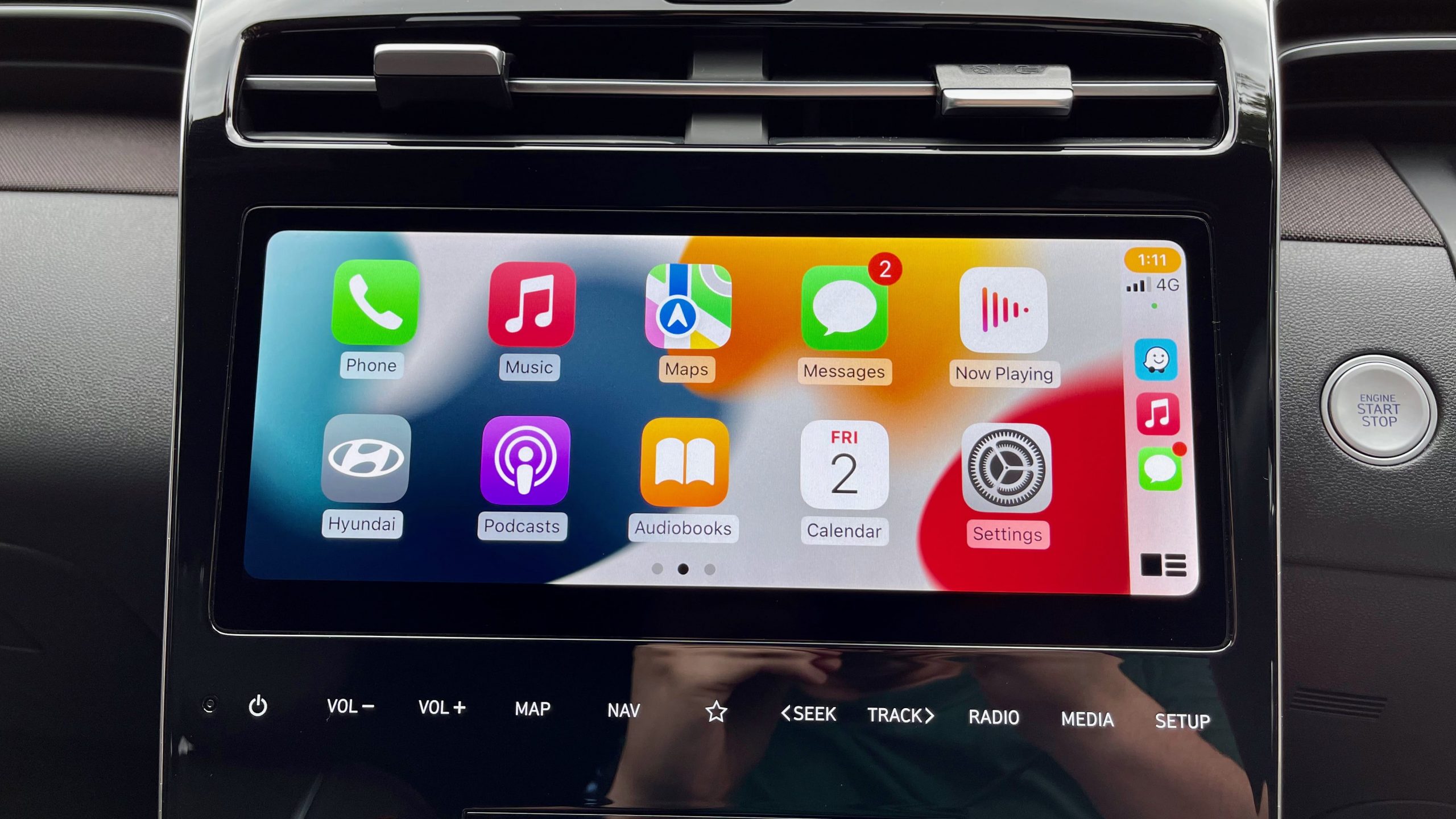
Shared equipment between the two SUVs are 19-inch alloy wheels with full-sized spare wheels, keyless entry with remote start and ‘summon’ feature, a 10.25-inch touch screen, wired Apple CarPlay and Android Auto, satellite navigation, a 10.25-inch digital driver’s display, automatic LED headlights, auto wipers, panoramic sunroofs, heated and auto-folding exterior mirrors, a power tailgate, an eight-speaker sound system (Harmon Kardon in the Kia and Bose in the Hyundai), digital radio, leather seating (with part-suede in the Sportage) with electric front seats and drivers memory, ambient lighting and rear privacy glass.
Safety features that are shared between the two in this comparison are blind-spot monitoring with blind-spot cameras, rear-cross traffic alert, front and rear parking sensors with a 360-degree surround view camera, adaptive cruise control, lane departure monitoring, lane keep assist, an auto dimming rear view interior mirror, forward collision alert, tyre pressure monitoring, autonomous emergency braking (AEB) with pedestrian and cyclist detection, auto high beam, rear AEB, driver attention detection, speed sign recognition and rear occupant alert.
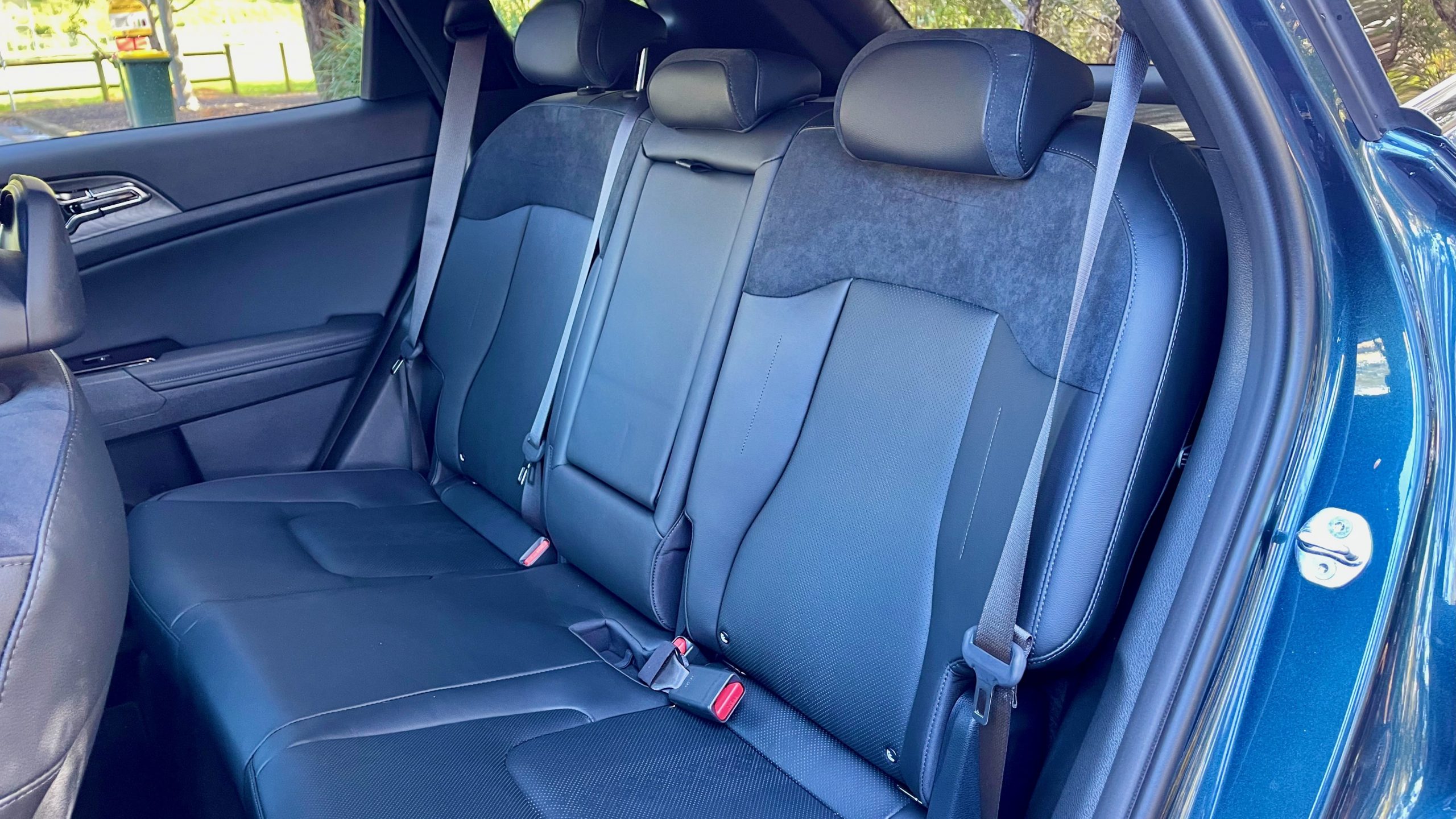
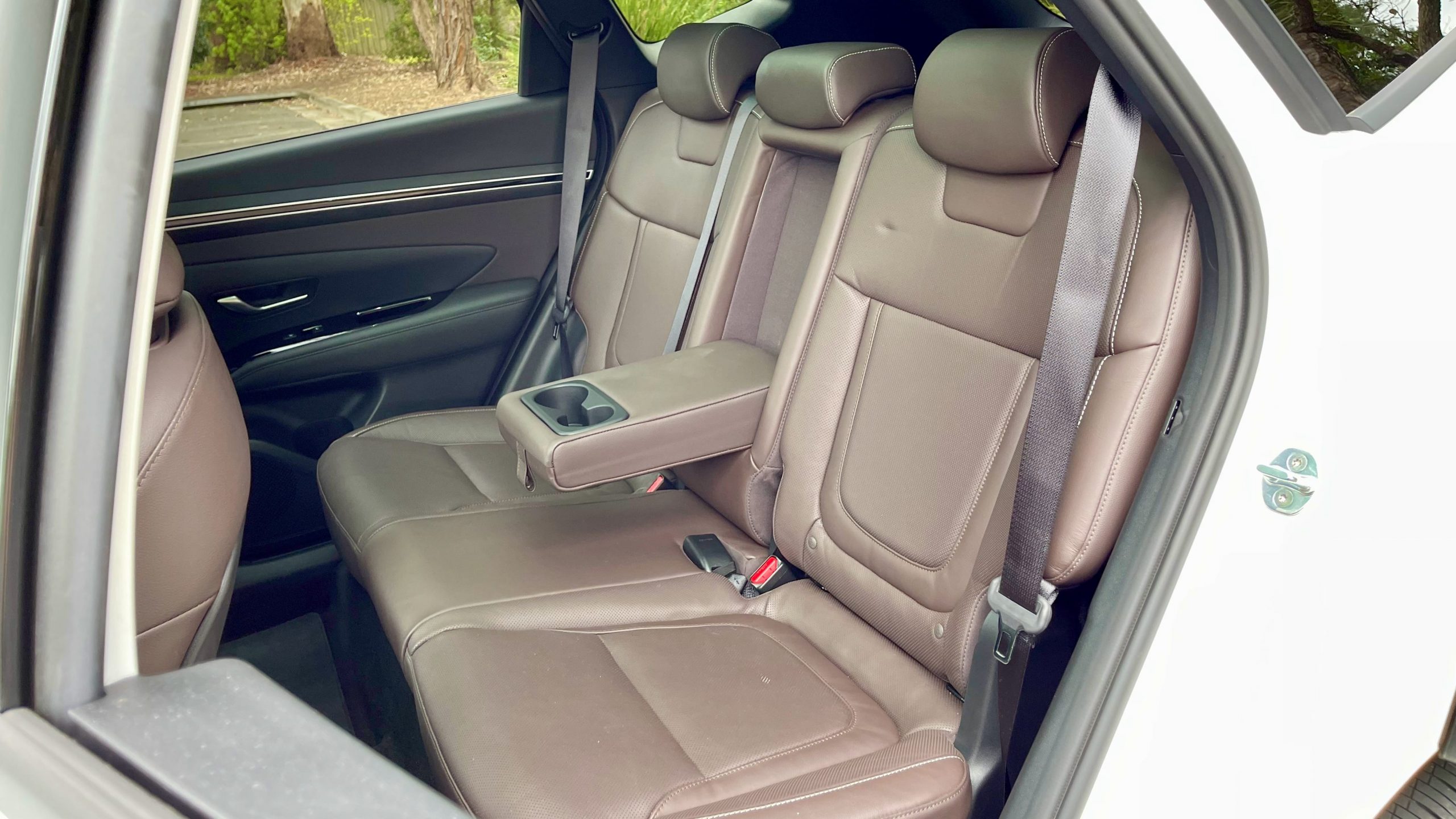
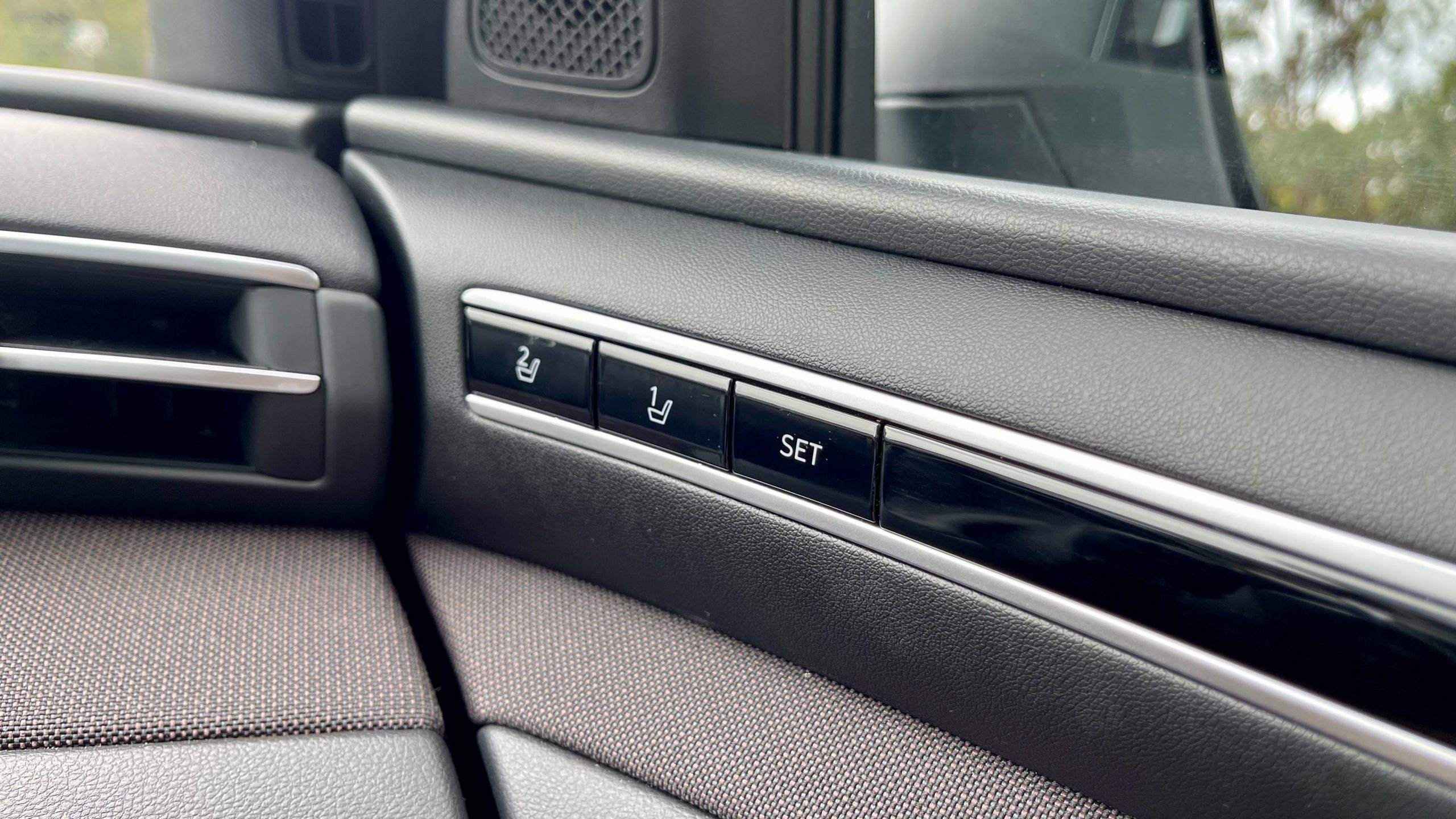
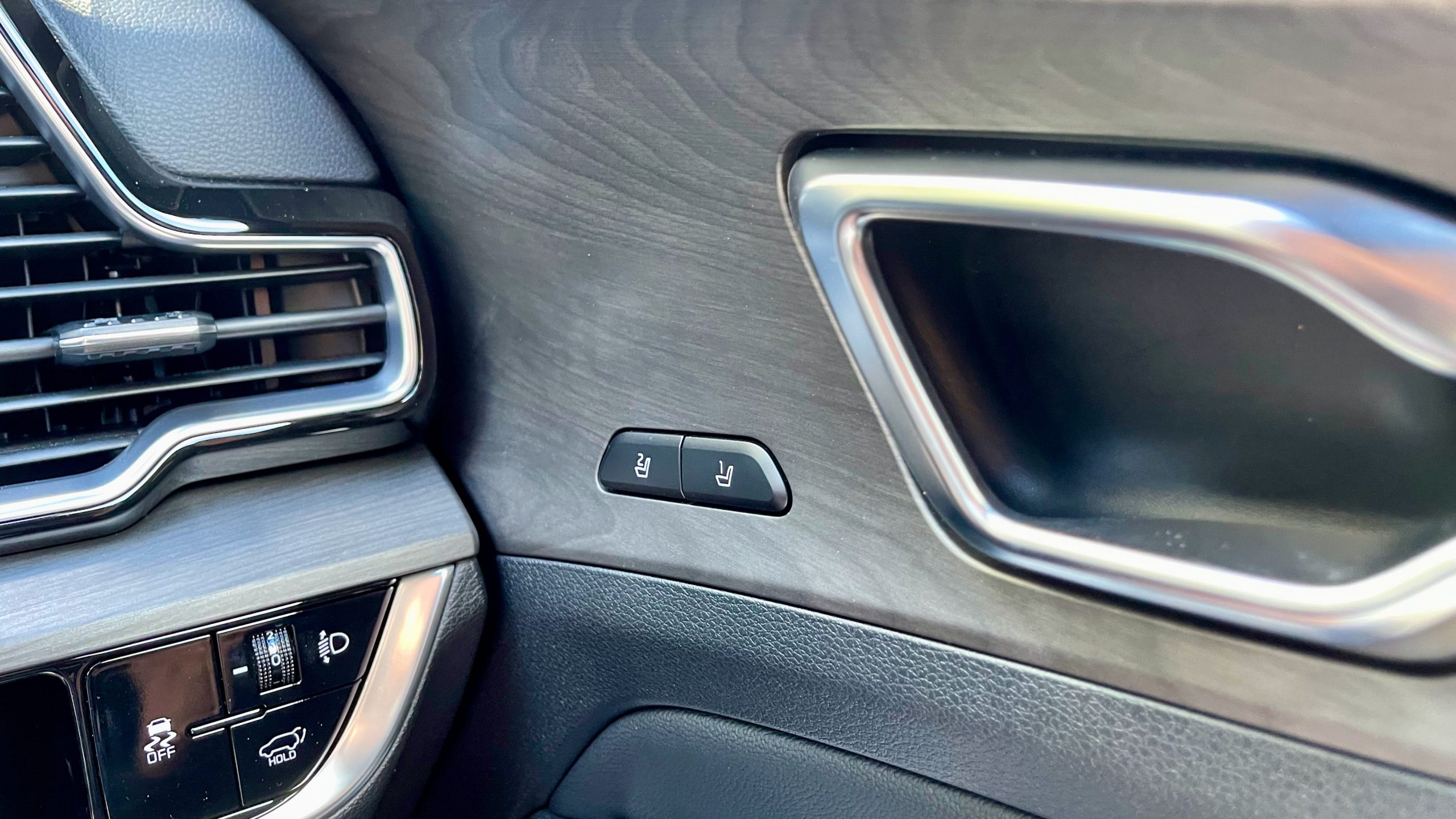
The Sportage has an extra airbag (eight vs seven), auto-levelling LED headlights and LED front fog lights over the Tucson. However, the Tucson does have rear heated seats, a heated steering wheel, LED number plate lights and an LED boot light over the Sportage.
The only option available on the Kia Sportage GT-Line is metallic paint. The standard colour available is ‘Clear White’ whereas ‘Fusion Black’, ‘Jungle Wood Green’, ‘Steel Grey’, ‘Snow White Pearl’, ‘Dawning Red’, ‘Gravity Grey’ and our test car’s ‘Vesta Blue’ come at an additional $520. The Hyundai Tucson Highlander has the option to choose leather colours – black is standard but brown or cream leather is available for $295. As far is paint is concerned on the Tucson, the standard colour – which is also the colour on our test car – is ‘White Cream’. ‘Phantom Black’, ‘Silky Bronze’, ‘Titan Grey’, ‘Deep Sea (Blue)’, ‘Amazon Grey’ and ‘Shimmering Silver’ are available for an extra $595.
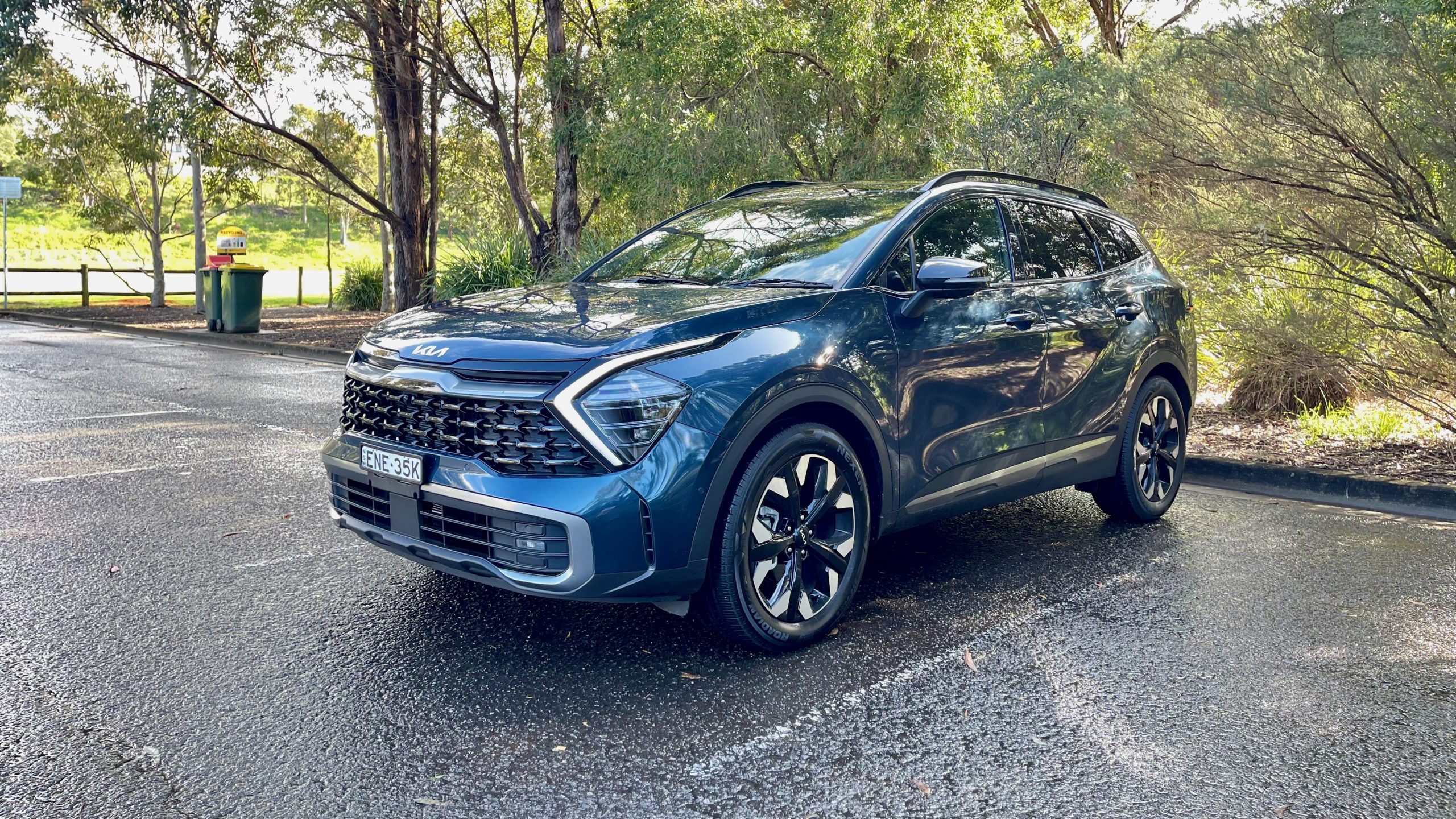
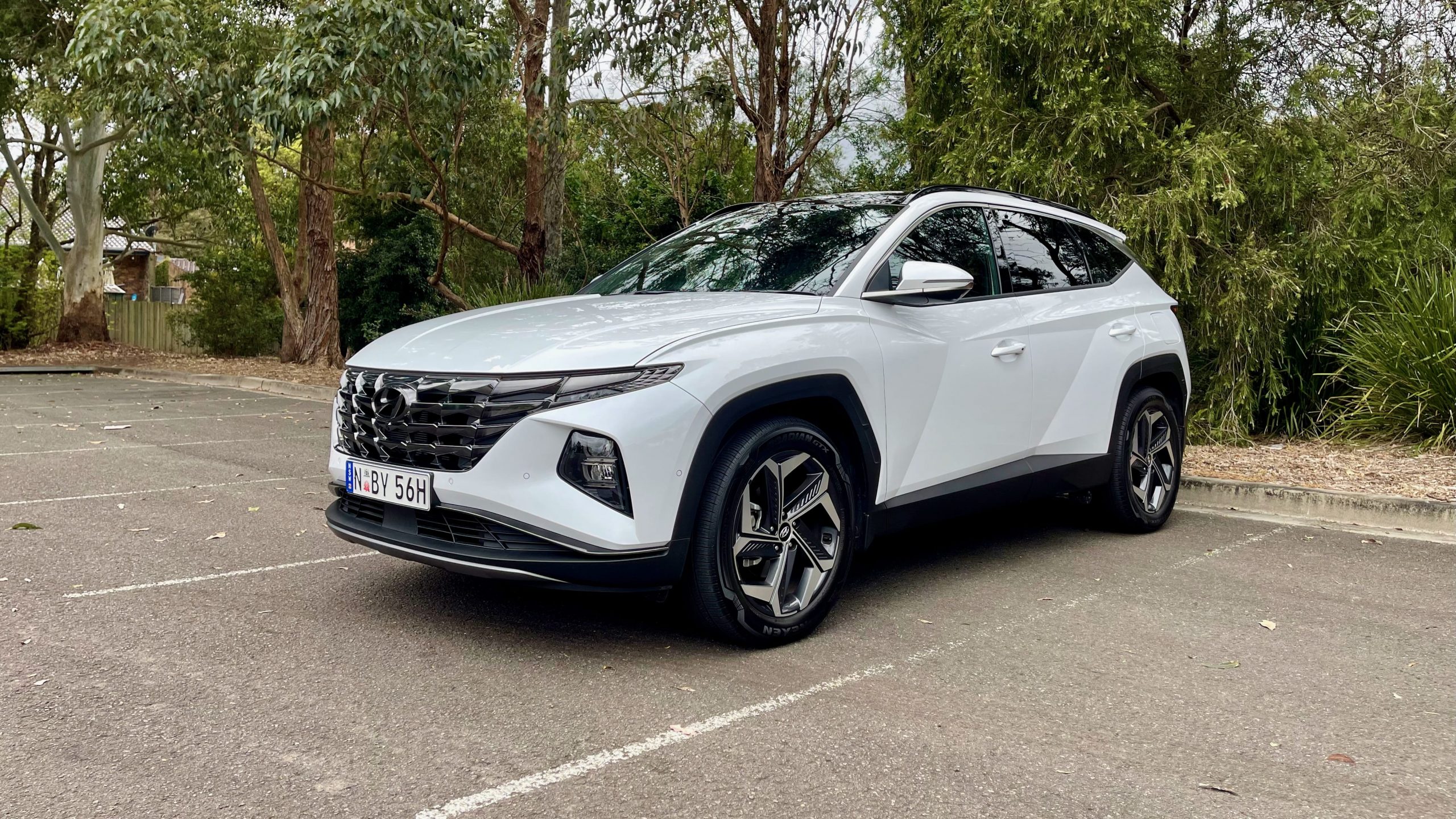
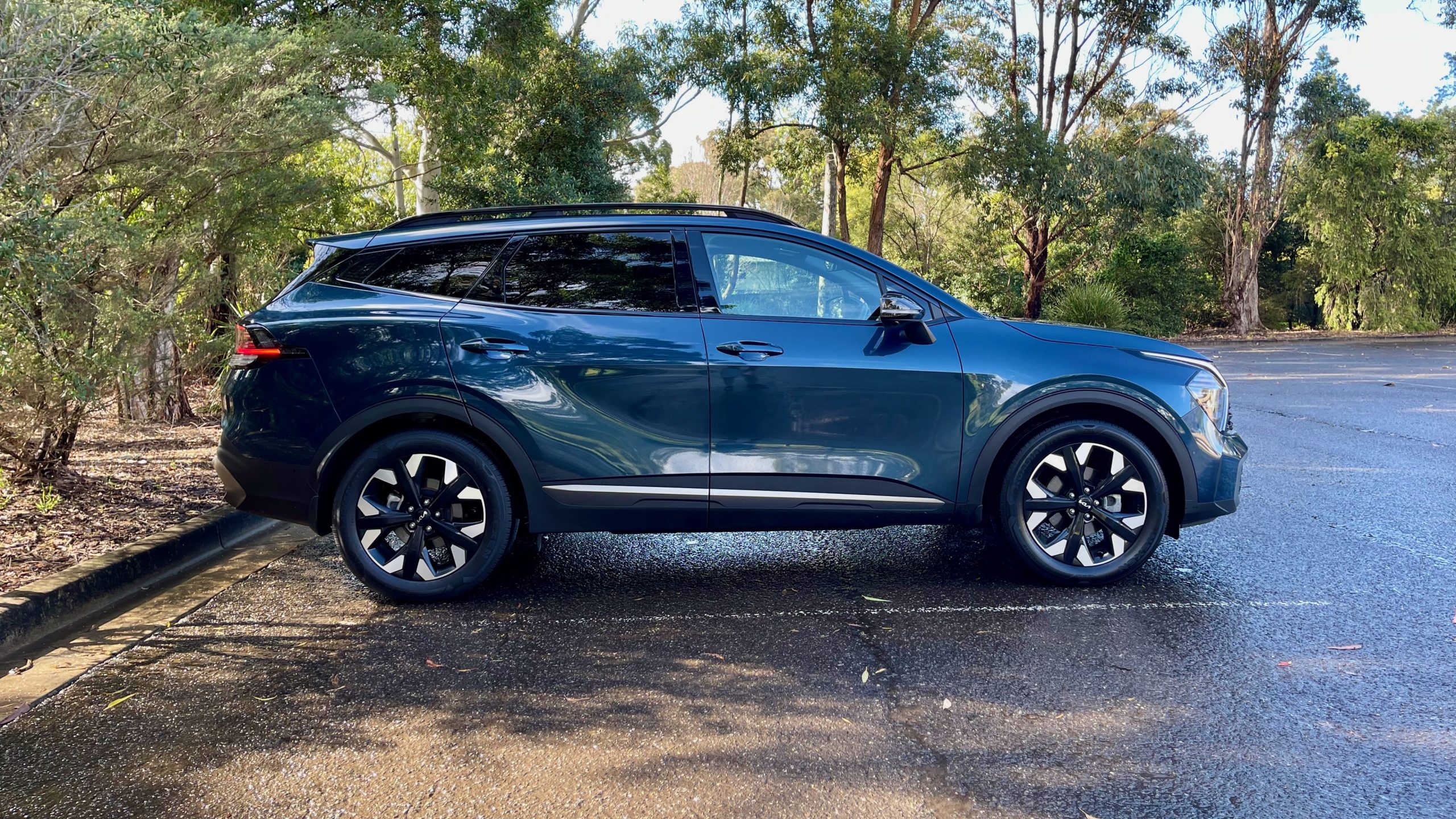
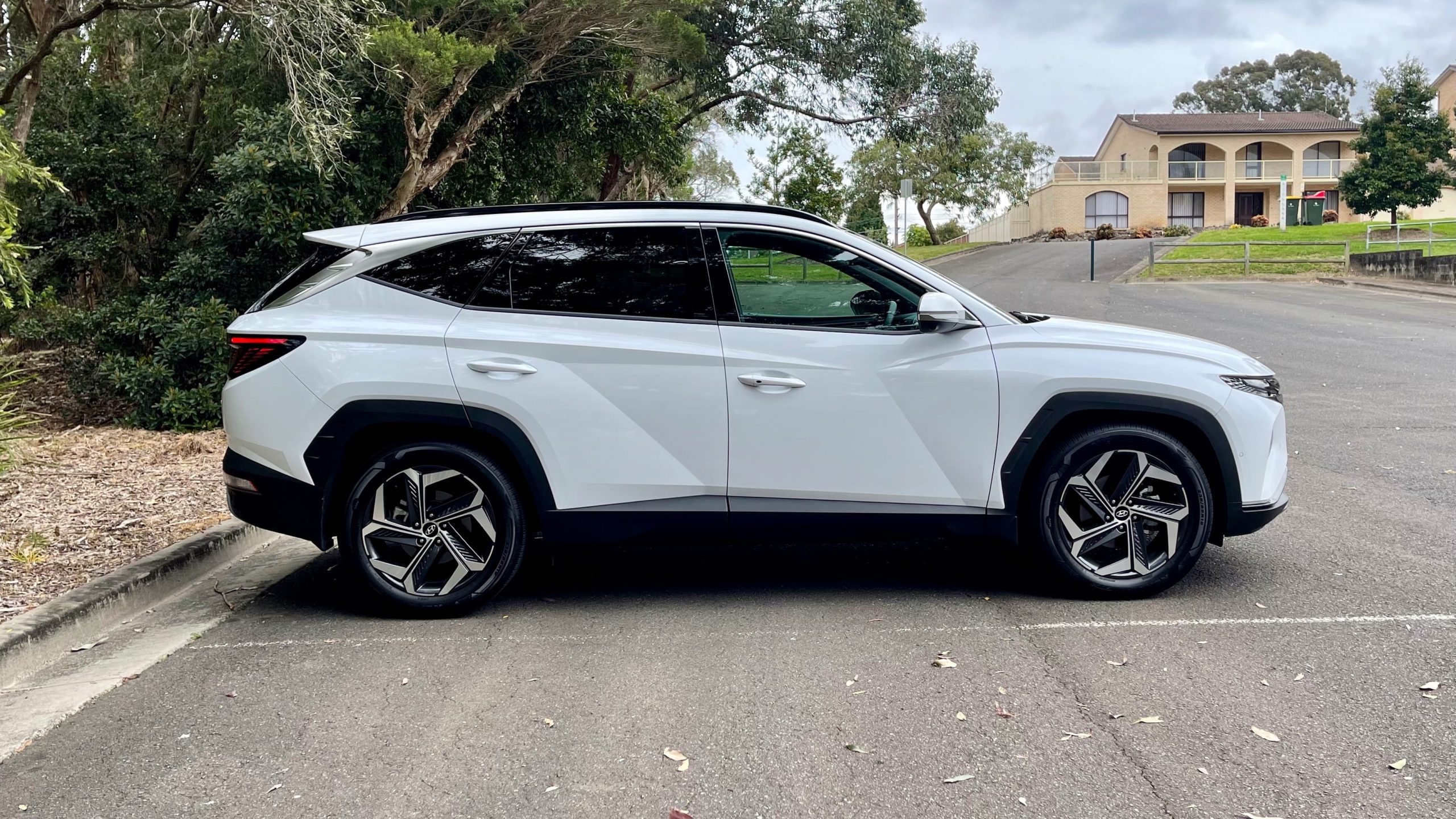
While the Hyundai Tucson Highlander is $40 more expensive than the Kia Sportage GT-Line, we do think the extra spend is worth it for the extra features. You do miss out on the extra airbag and some light trickery, but we overall, think the Tucson is better value.
Price & Equipment winner: 2022 Hyundai Tucson Highlander diesel
Engine & Performance:
The cars in this SUV comparison have the same engine. The Hyundai and Kia come with the same 2.0-litre turbo diesel four-cylinder unit which has been updated recently to feature ‘Smartstream’ technology which aids in fuel efficiency. The engine produces 137kW of power and 416Nm of torque, which is healthy for the segment. Drive is sent through an eight-speed torque converter automatic transmission to a reactive all-wheel drive system.
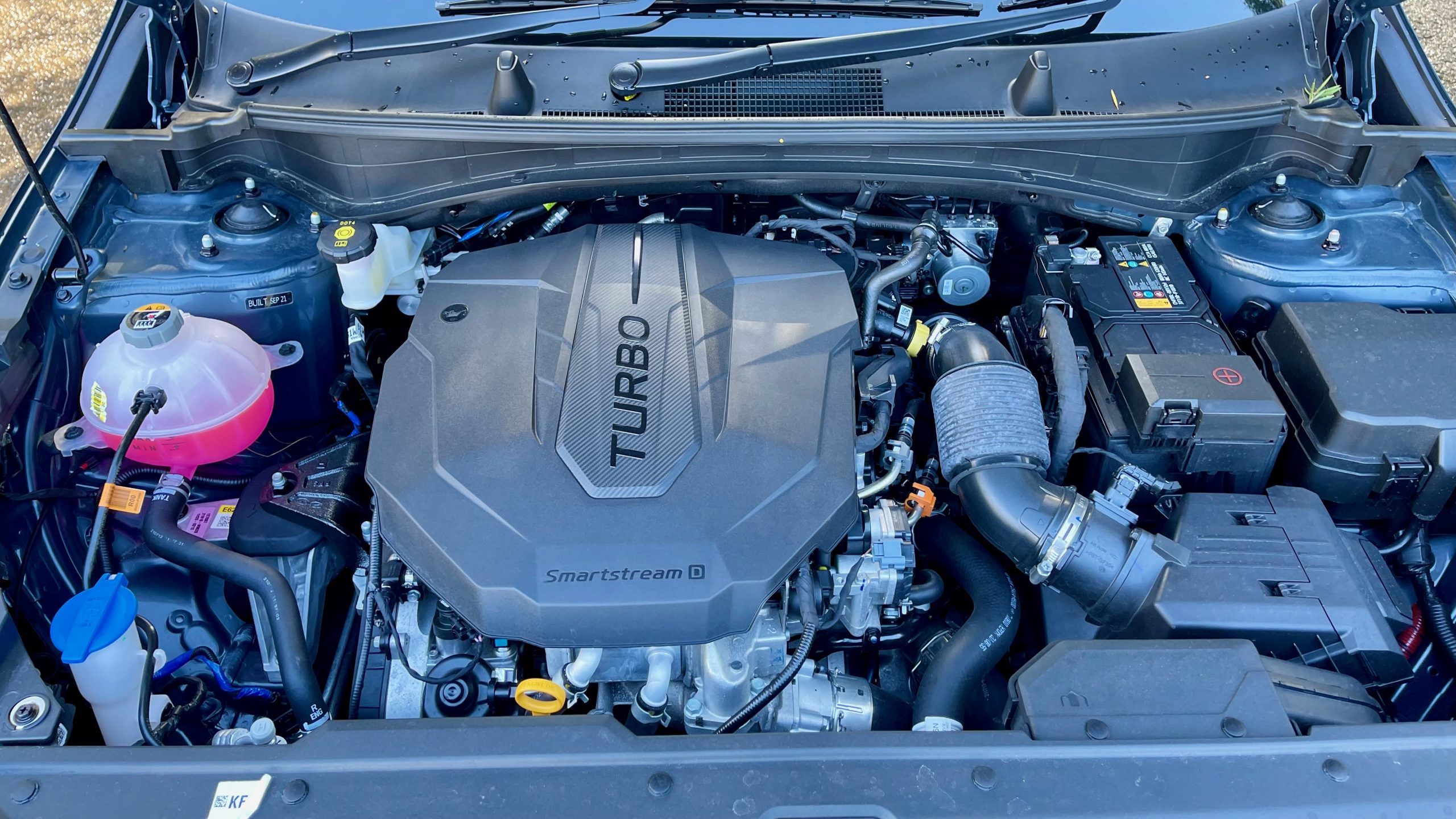
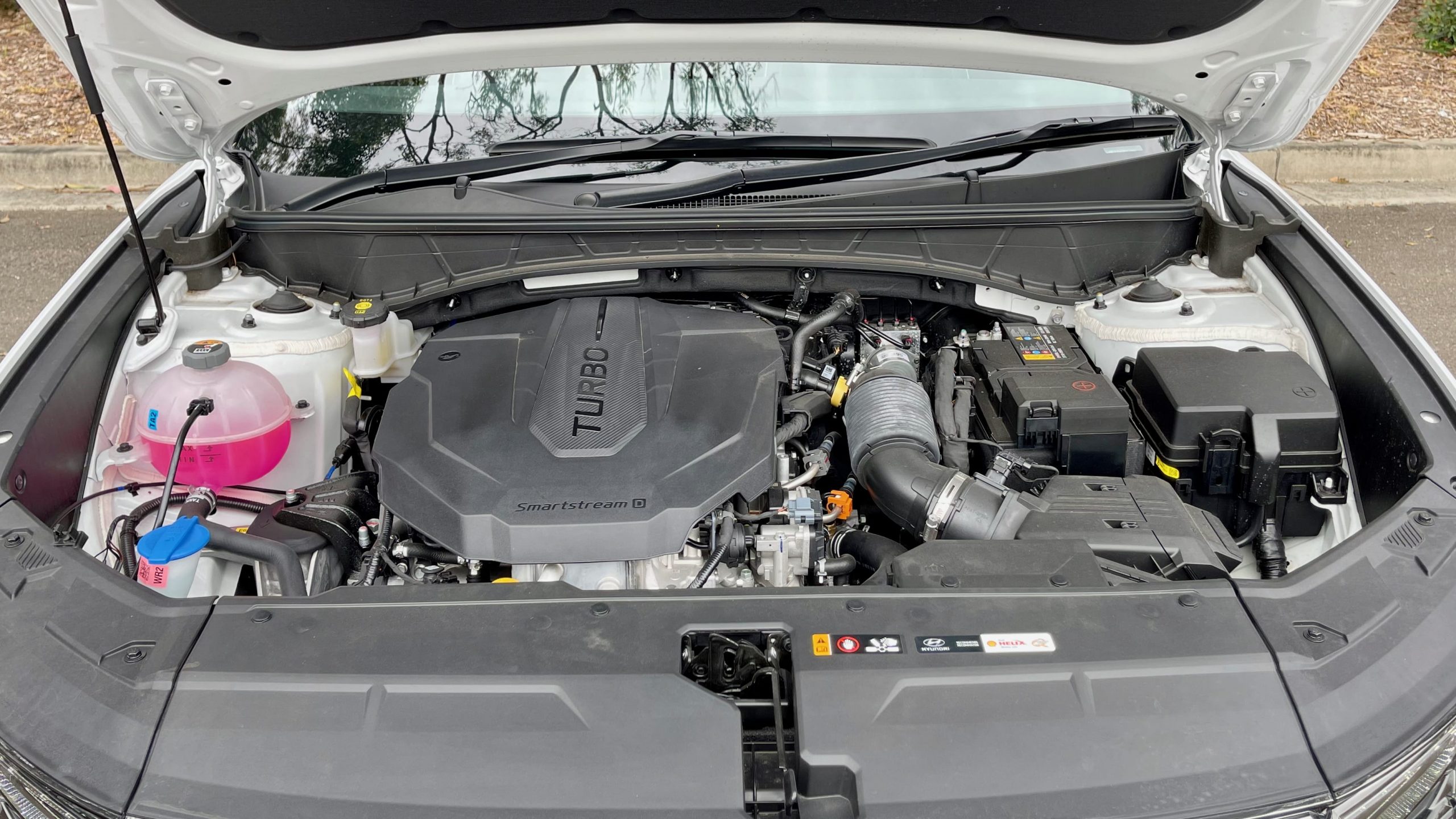
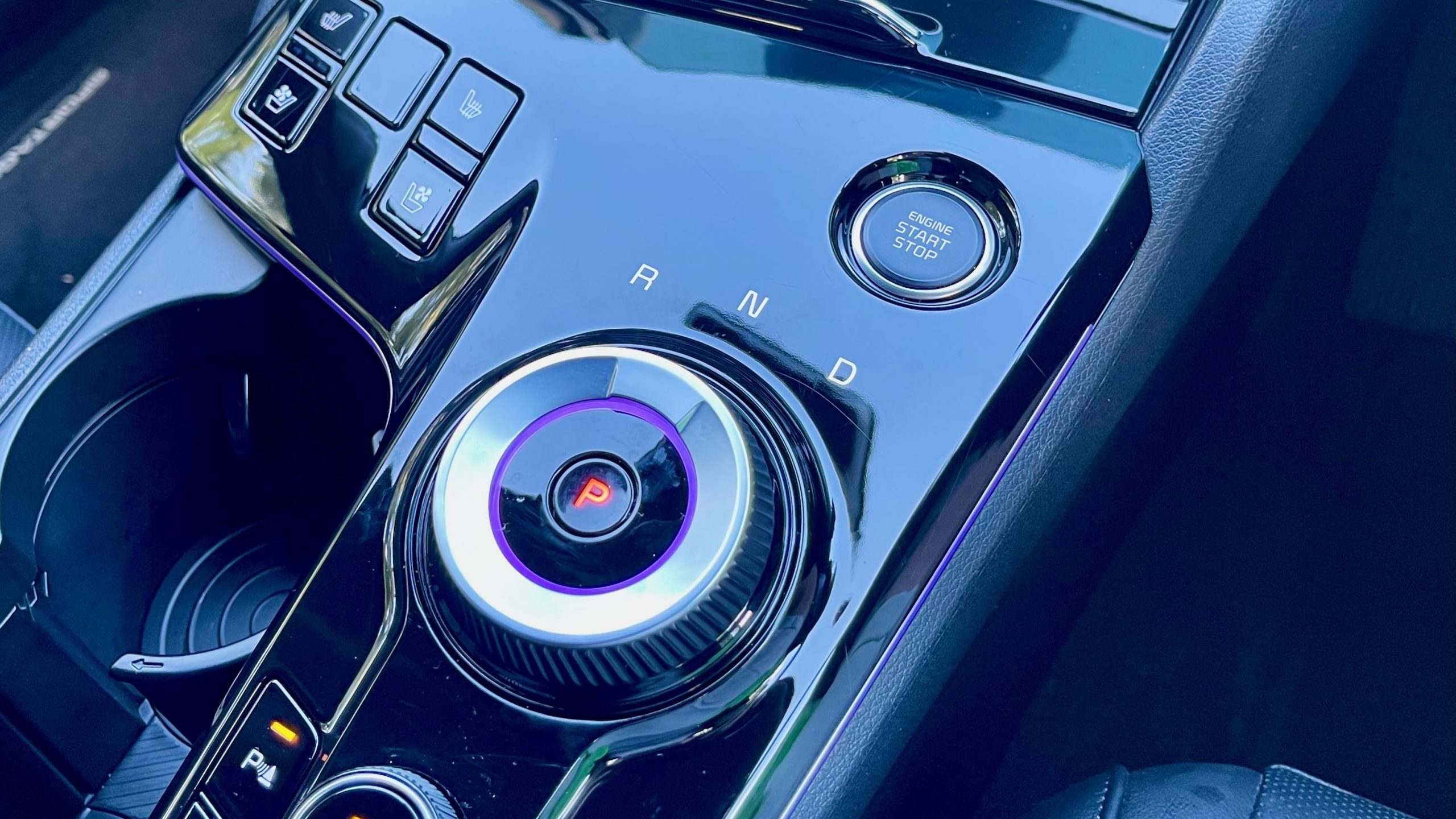
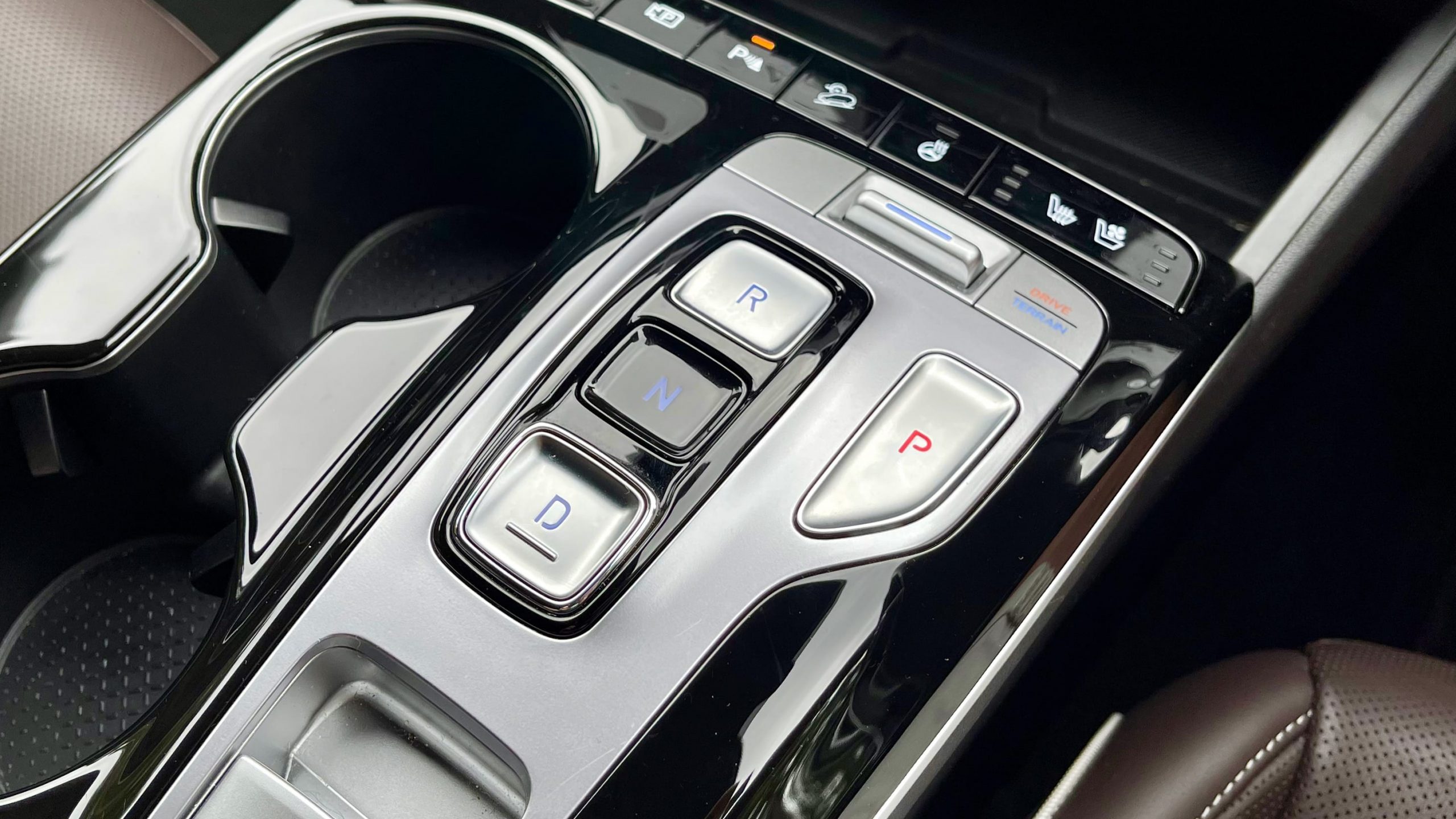
The engine in the Hyundai and Kia cousins is an excellent one. It is quiet, refined, and offers fantastic drivability. The engine doesn’t feel as clunky and tractor-like as previous diesel engines have and it almost offers a European feel.
The transmission can be a tiny bit jerky at slow speeds at times but that is as far as the niggles go. It does a fantastic job of keeping the revs in the power band, while it also is very smooth and shifts well with little lag. As far as driving the two cars back-to-back and feeling for differences, we found that the Sportage was a little smoother to drive than the Tucson in regard to gearbox tuning. Apart from that, both cars are very similar to drive.
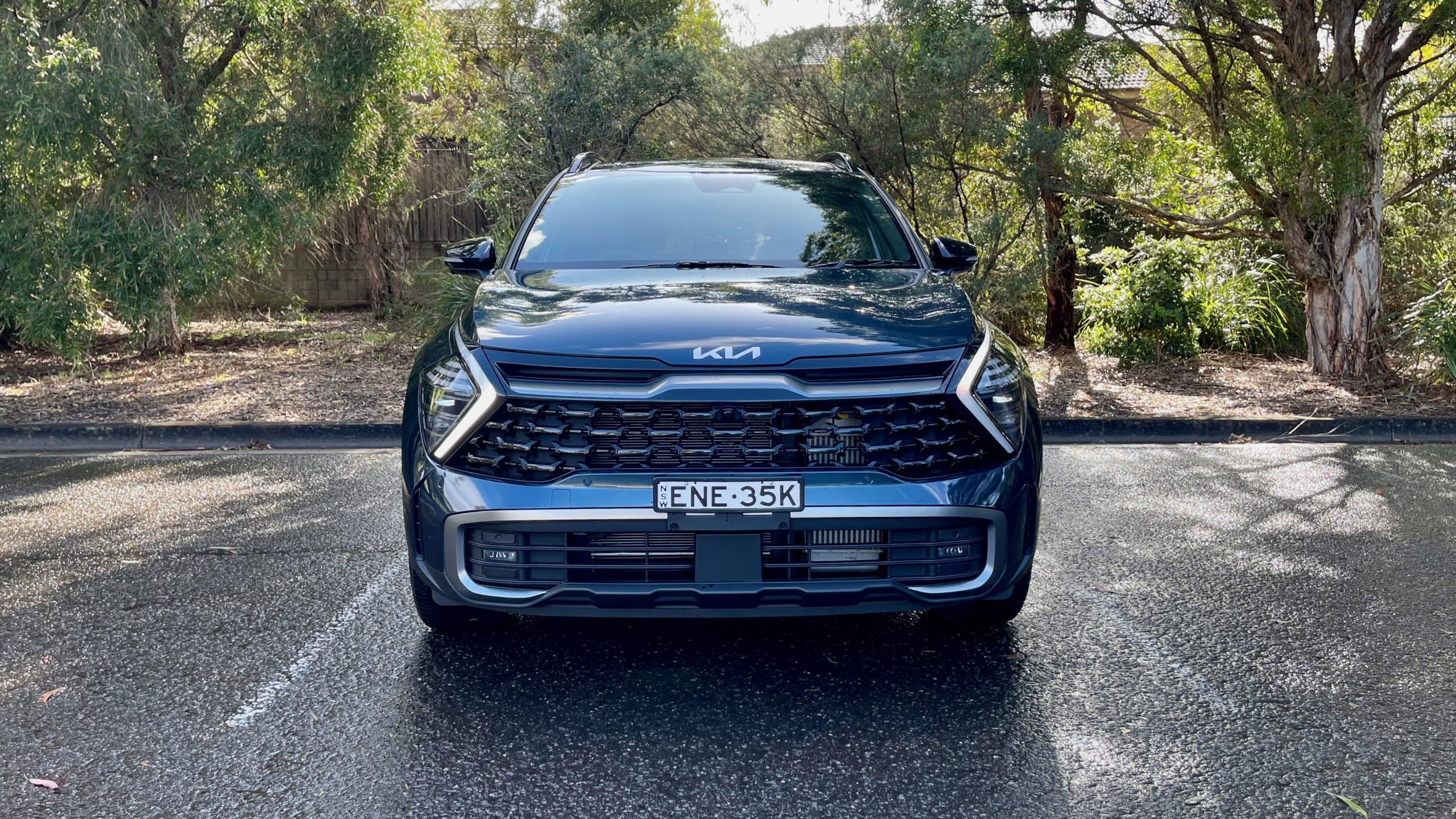
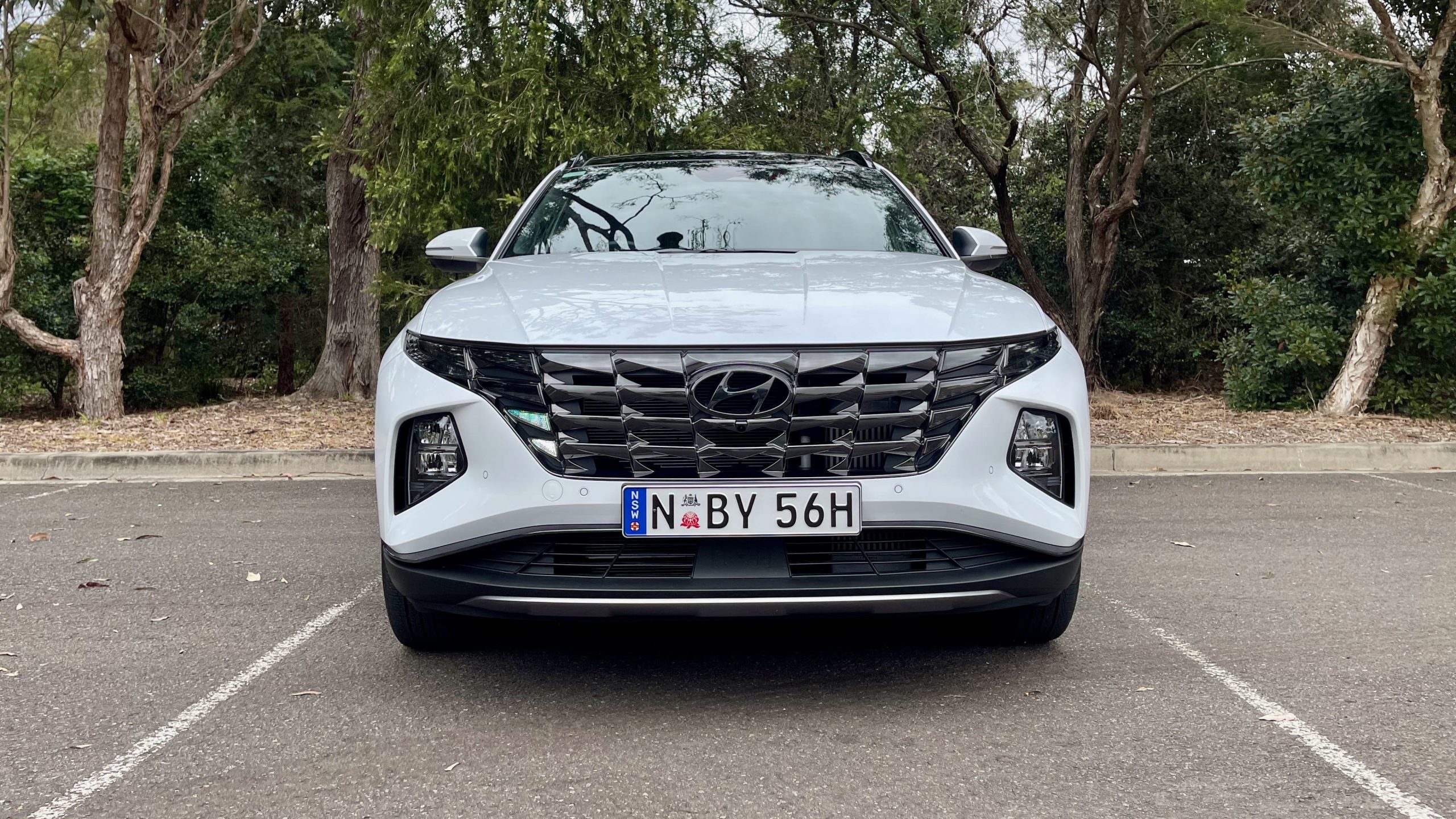
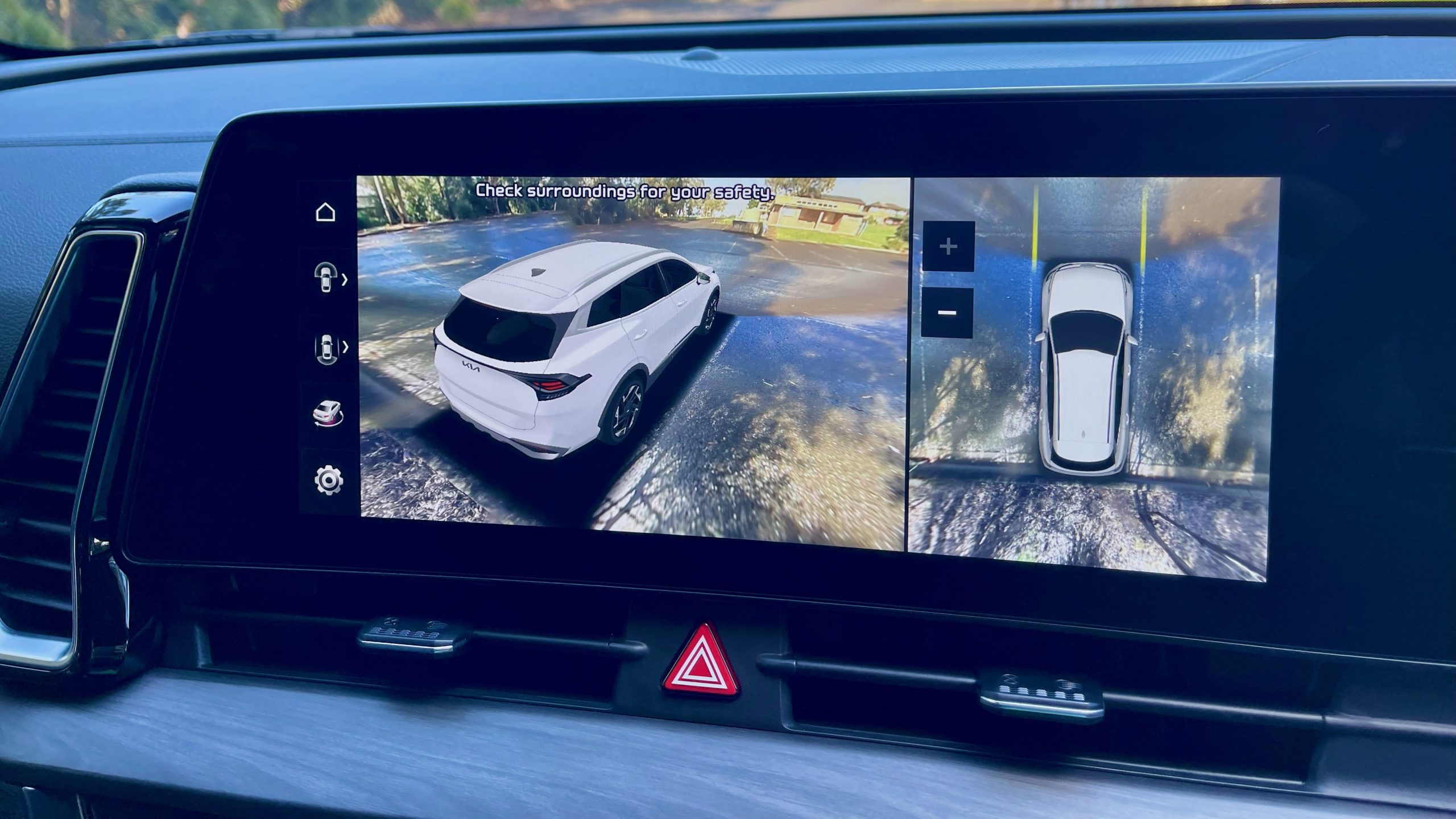
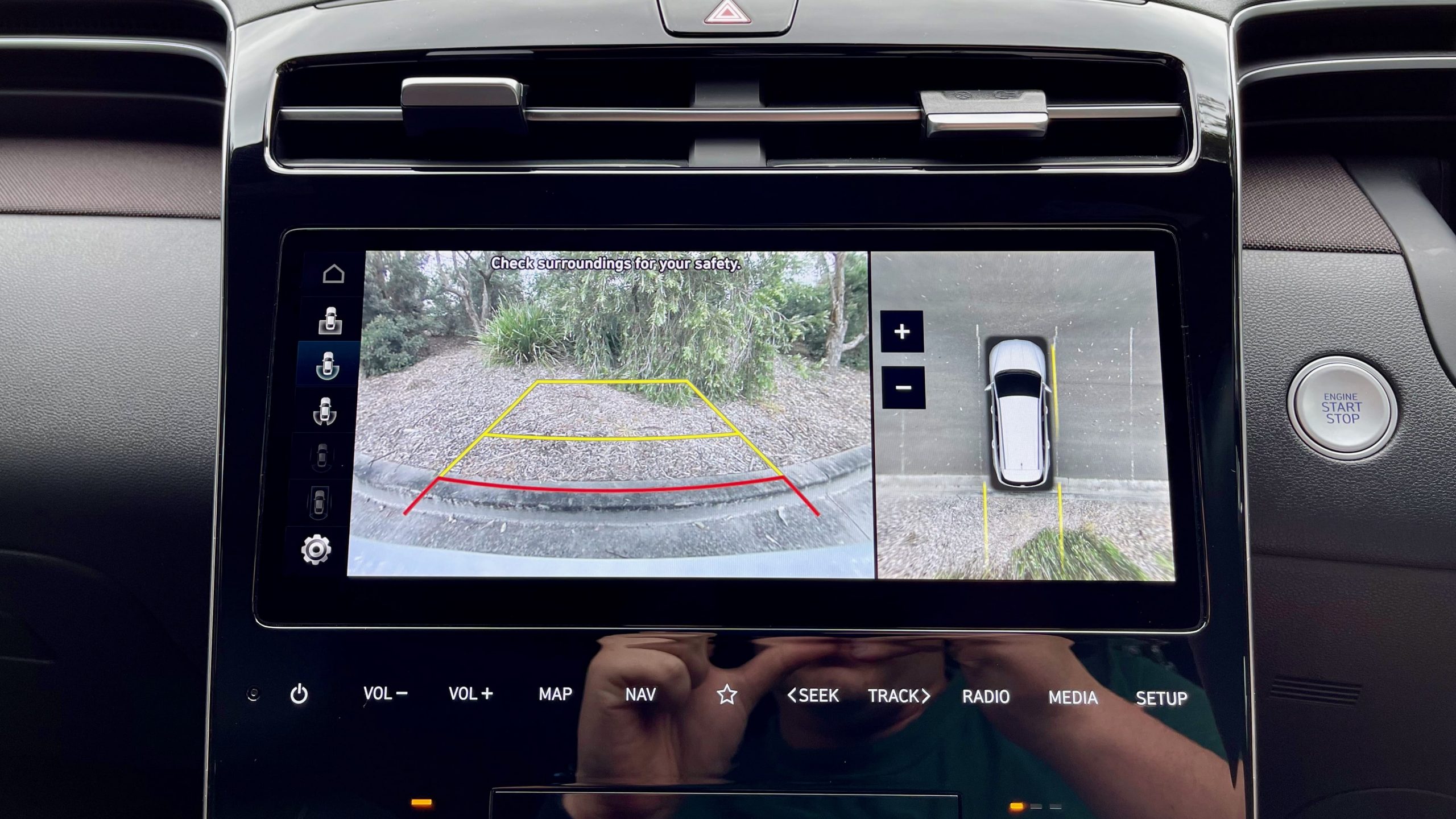
Fuel consumption, much like other mechanical aspects of the two cars, is basically the same. The claimed average fuel consumption figure for both cars is 6.3L/100km and we saw a real world figure for both cars of 8.1L/100km, which we were rather impressed with. Both cars lack stop-start functionality, which could improve their urban efficiency further. Both cars have 54-litre fuel tanks.
Performance & Economy winner: it’s a tie
Ride & Handling:
Ride and handling is one aspect that does differentiate these otherwise quite similar SUVs. Kia have tuned the ride characteristics for Australian roads, which means the Sportage is more at home on Aussie soil. It is more comfortable on a day-to-day basis, whereas the Tucson uses the same suspension tune as European Tucsons. This is not a bad thing as the Tucson rides well, but the Sportage is just that little bit more refined.
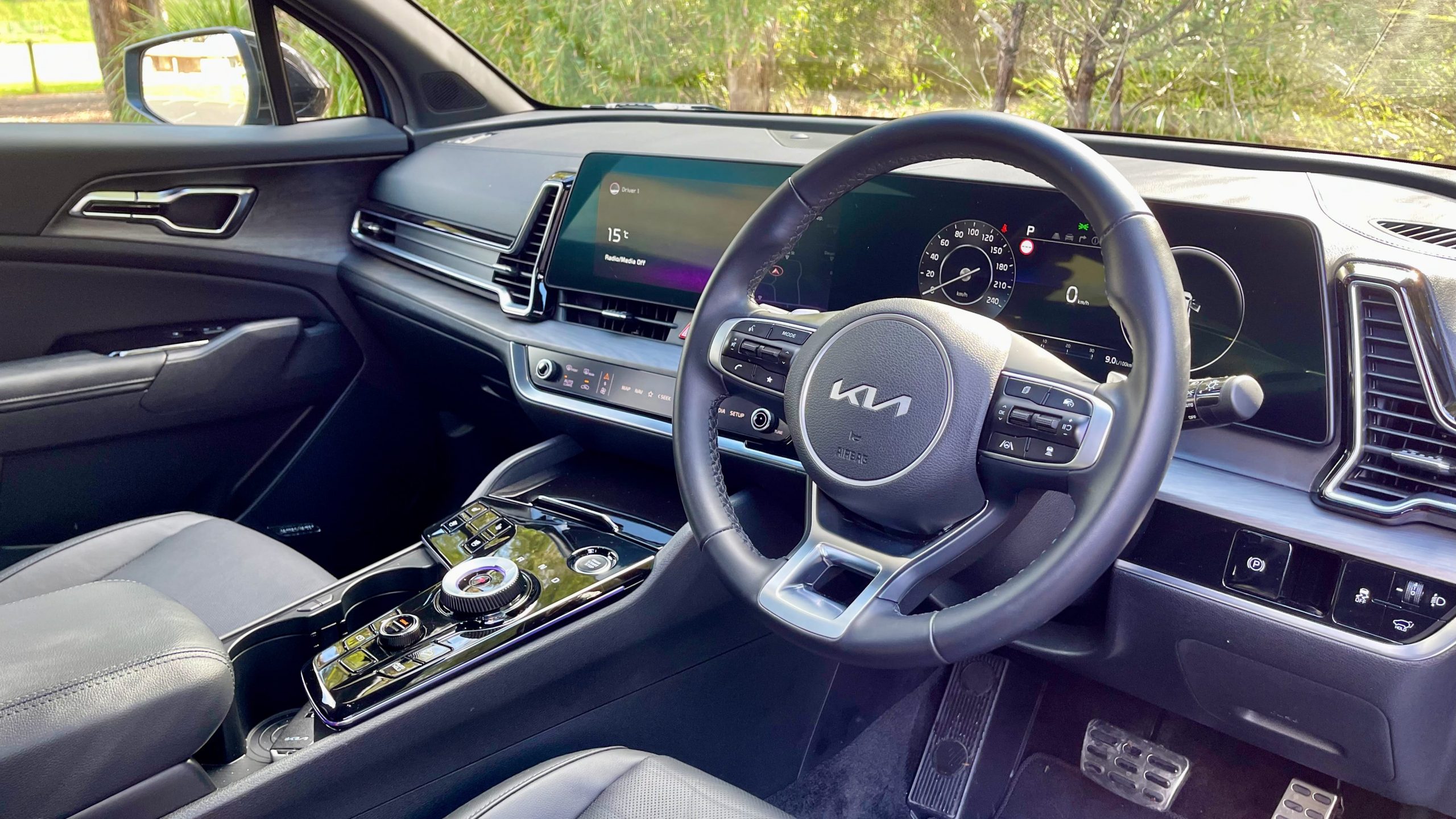
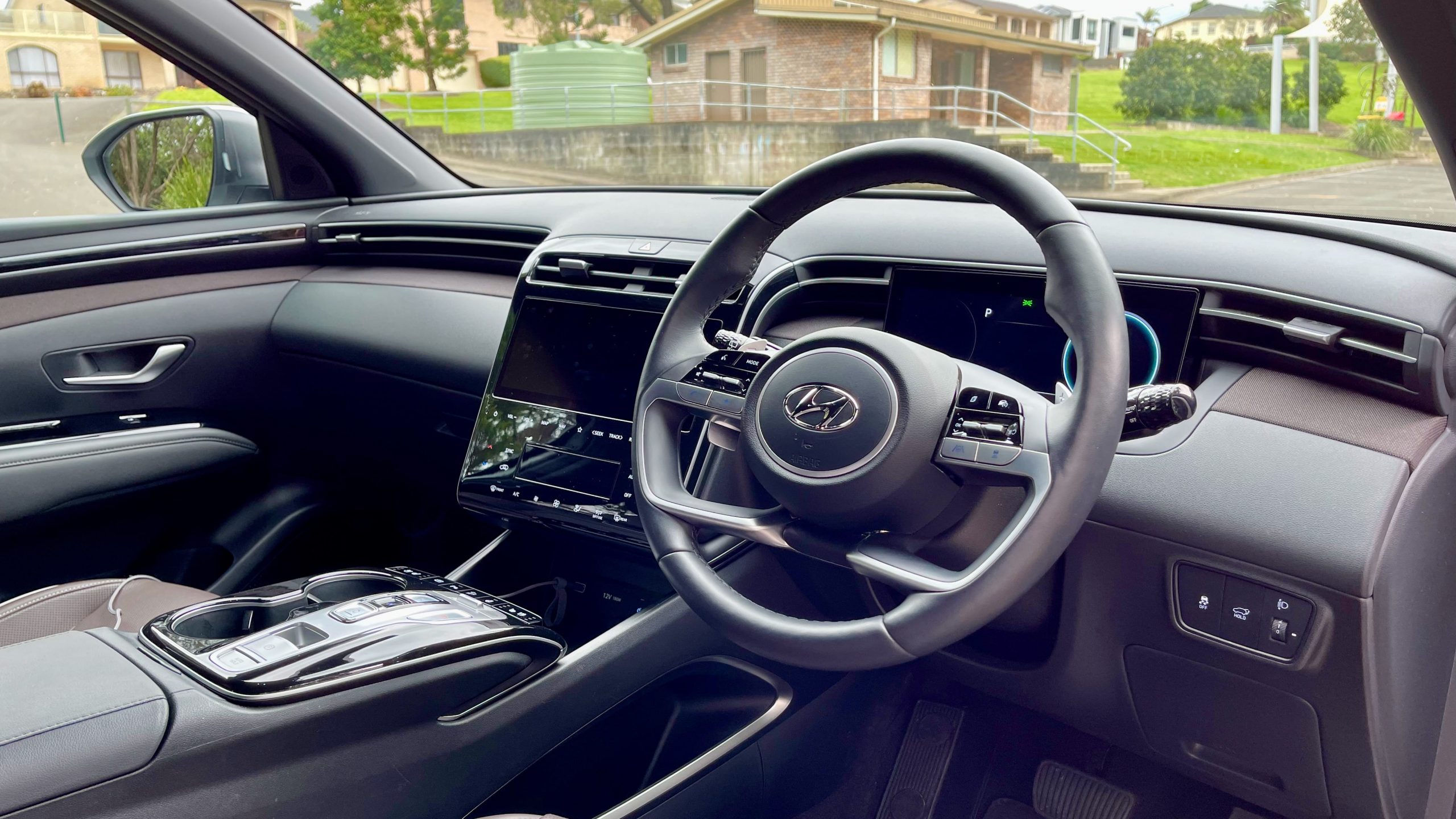
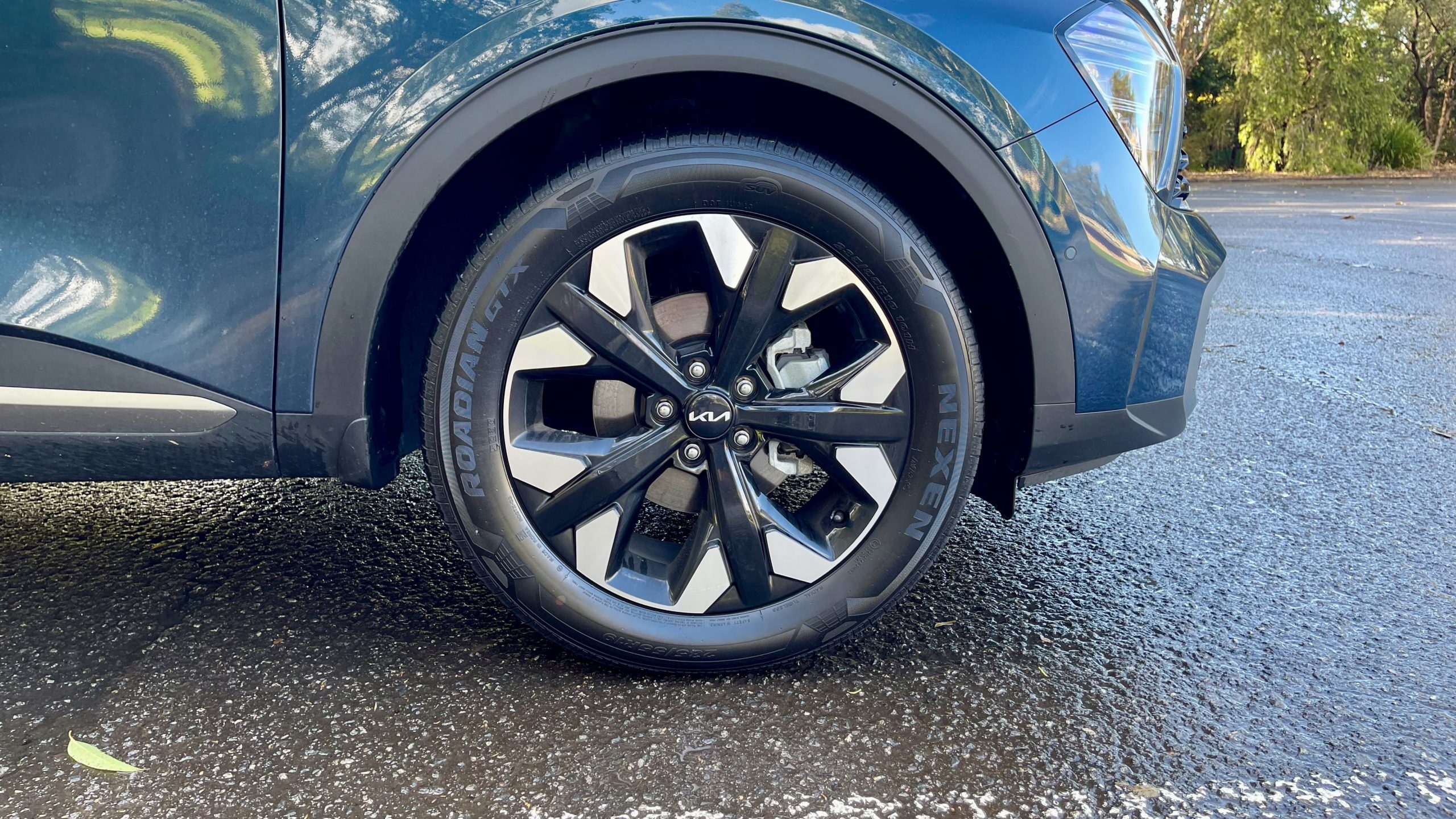
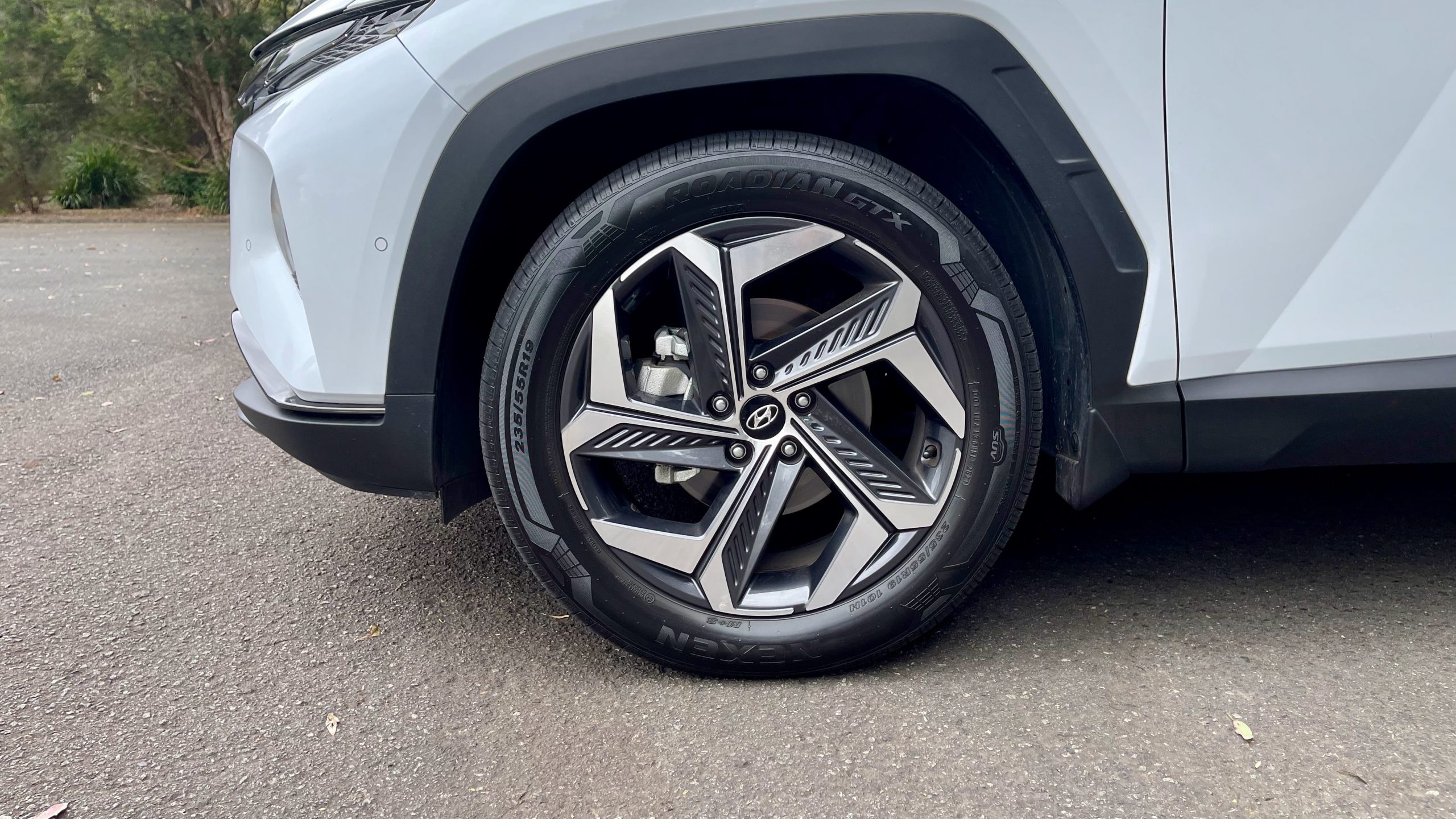
The ride characteristics of both cars are very good for SUVs. We would confidently say that these two are the best handling non-performance oriented mid-sized SUVs currently on offer in Australia. They are obviously no i30 Ns but for what they are they handle rather well. Both cars use the same active safety systems and on both cars they work well to keep passengers safe. The forward collision alert isn’t overly sensitive, the adaptive cruise control does what it should and the 360-degree camera is clear and concise. The steering on both cars are light and makes manoeuvring at slower speeds easy.
Ride & Handling winner: 2022 Kia Sportage GT-Line diesel
Interior & Practicality:
The interior is an important part of a car as it is the place you spend most of your time, so you want to make sure it is nice and comfortable. Luckily enough the cabins the cars in this SUV comparison are luscious and class leading. The designs of the dash in both cars couldn’t be more different – the 2022 Kia Sportage has an arguably more modern interior, but the 2022 Hyundai Tucson’s interior has slightly more features and slightly better quality.
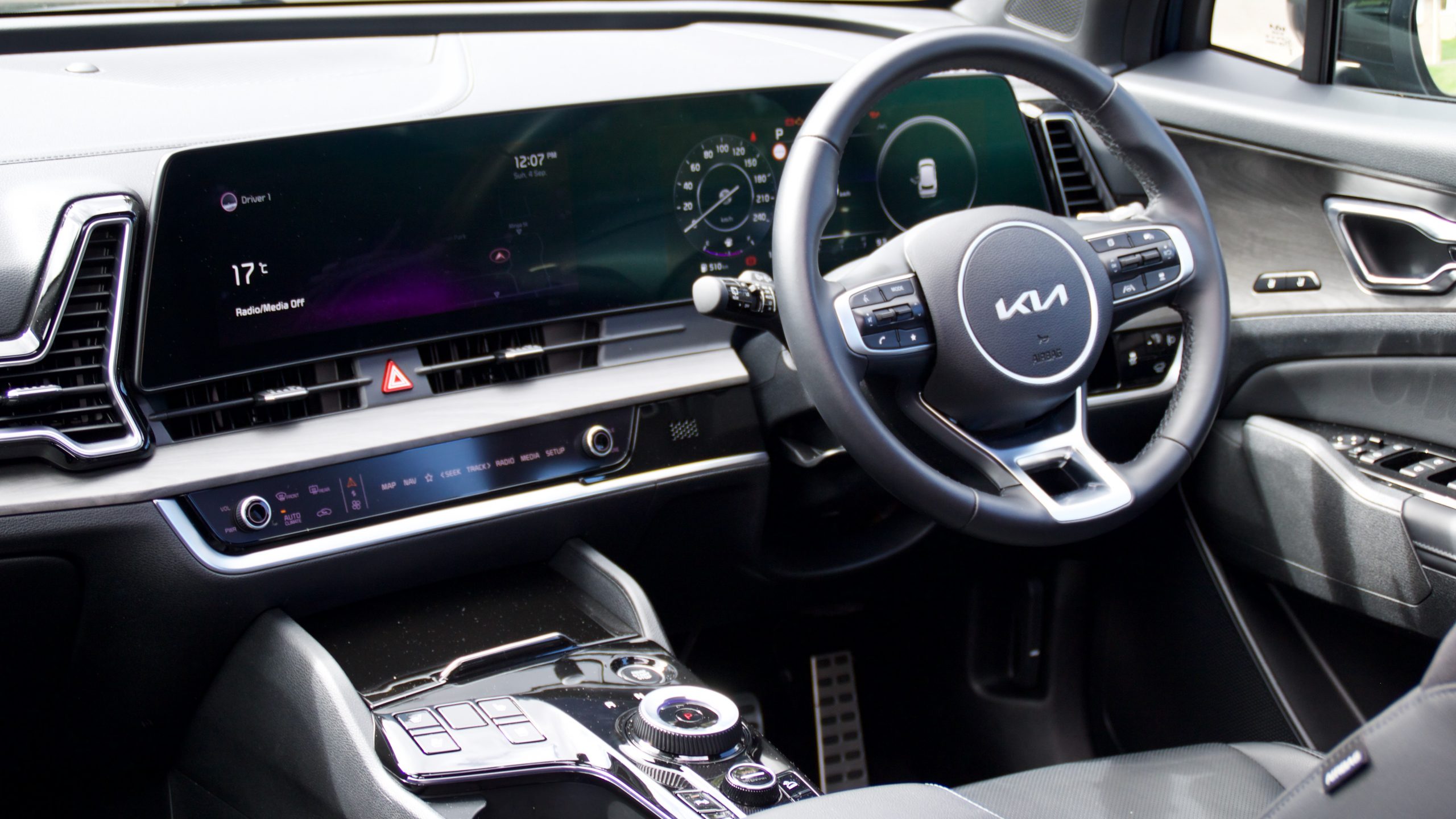
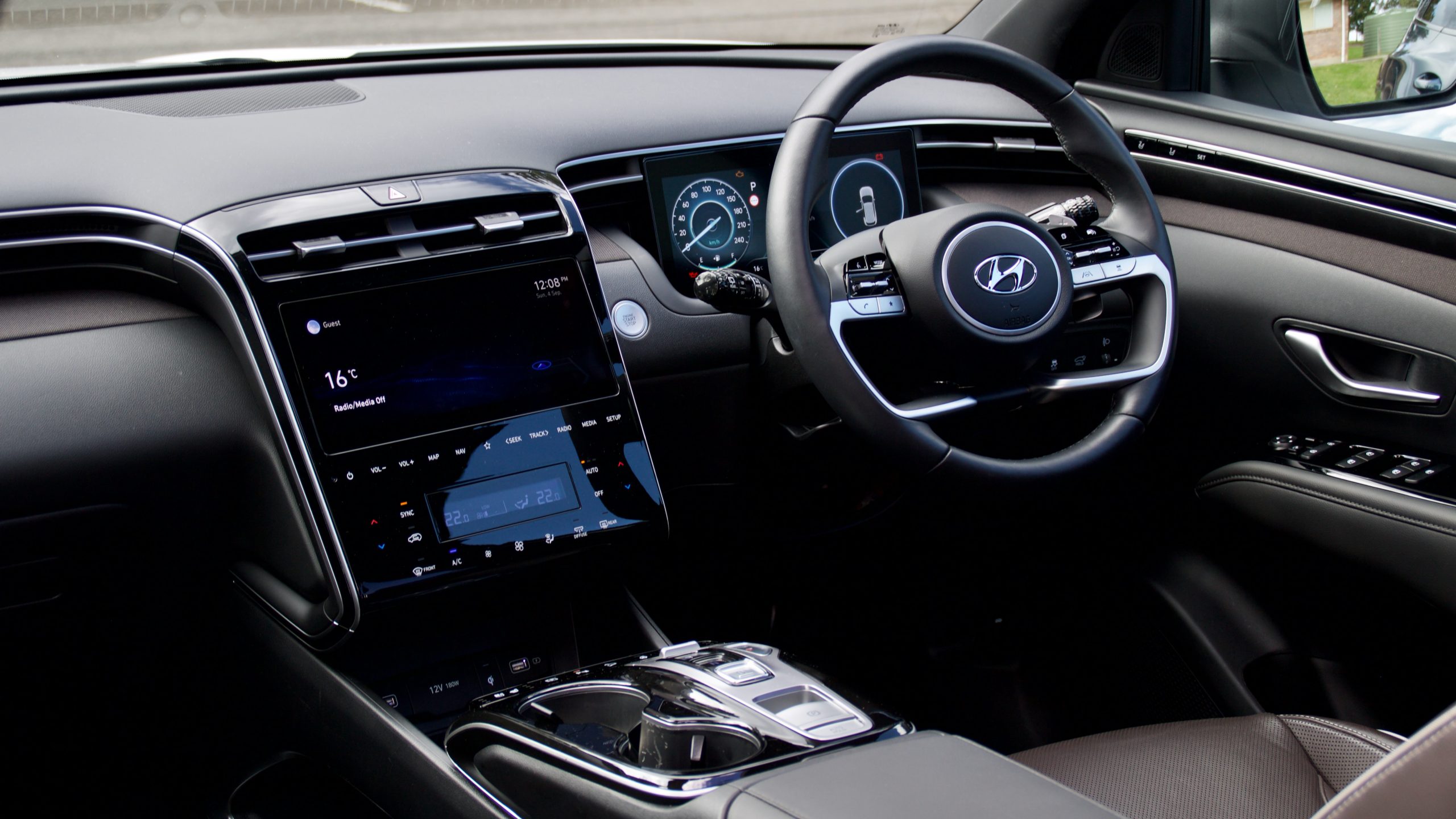
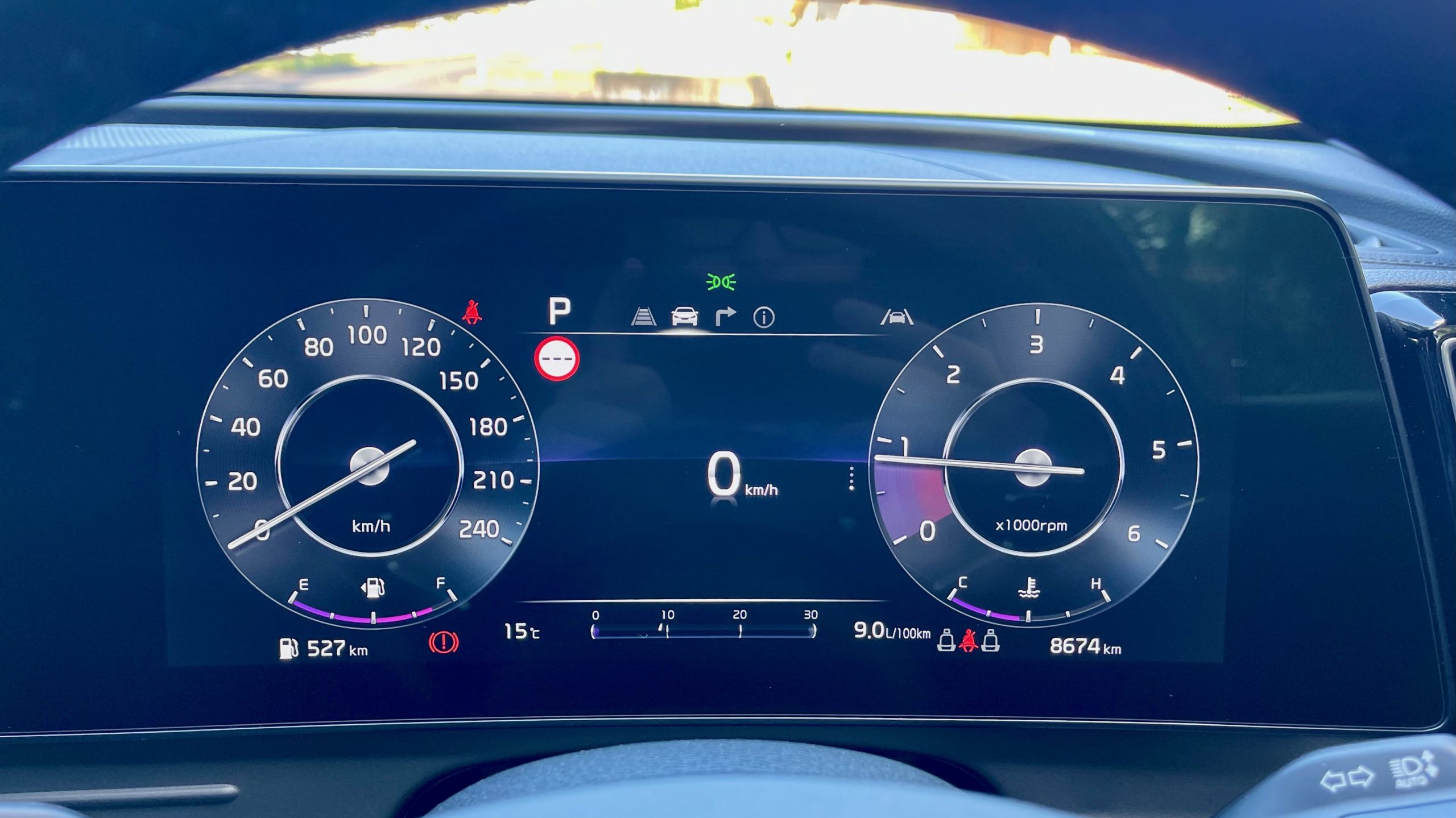
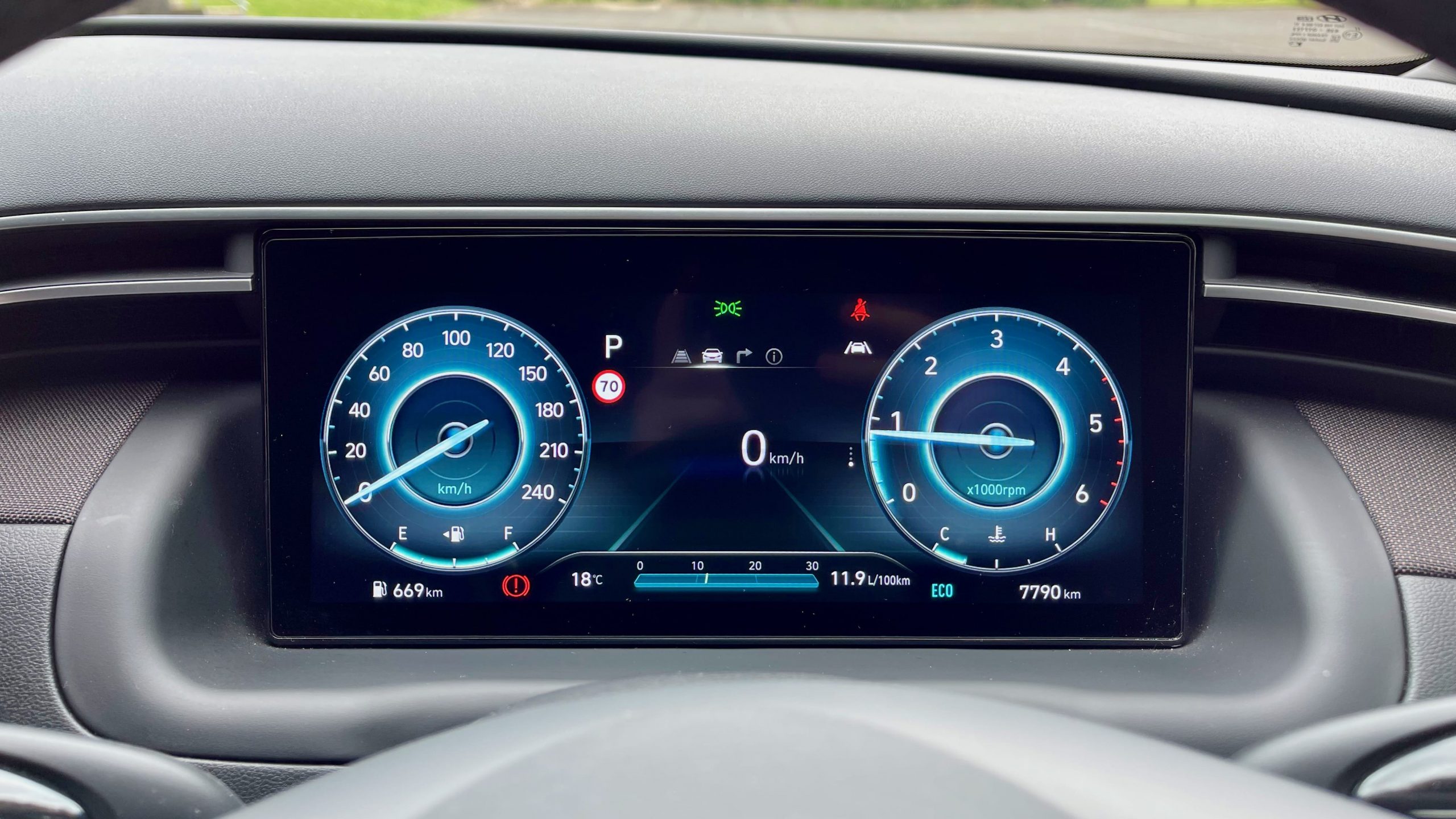
The storage solutions and interior quality in both cars are comparable and rather good, with good quality and plenty of storage options. While the Kia has slightly more storage options, the Hyundai’s interior is slightly better quality with more soft touch materials than its cousin. It’s an impressive interior, and one of the best in the segment.
The 10.25-inch touchscreens in both cars are clear and offer very good resolution. The Sportage’s screen is a little easier to use as it is angled slightly towards the driver. Both infotainment systems are very similar with the same basic system – just with brand-specific font etc on top – and are easy to use. Unfortunately, neither car has wireless Apple CarPlay or Android Auto, though both cars have USB inputs and wireless charging pads.
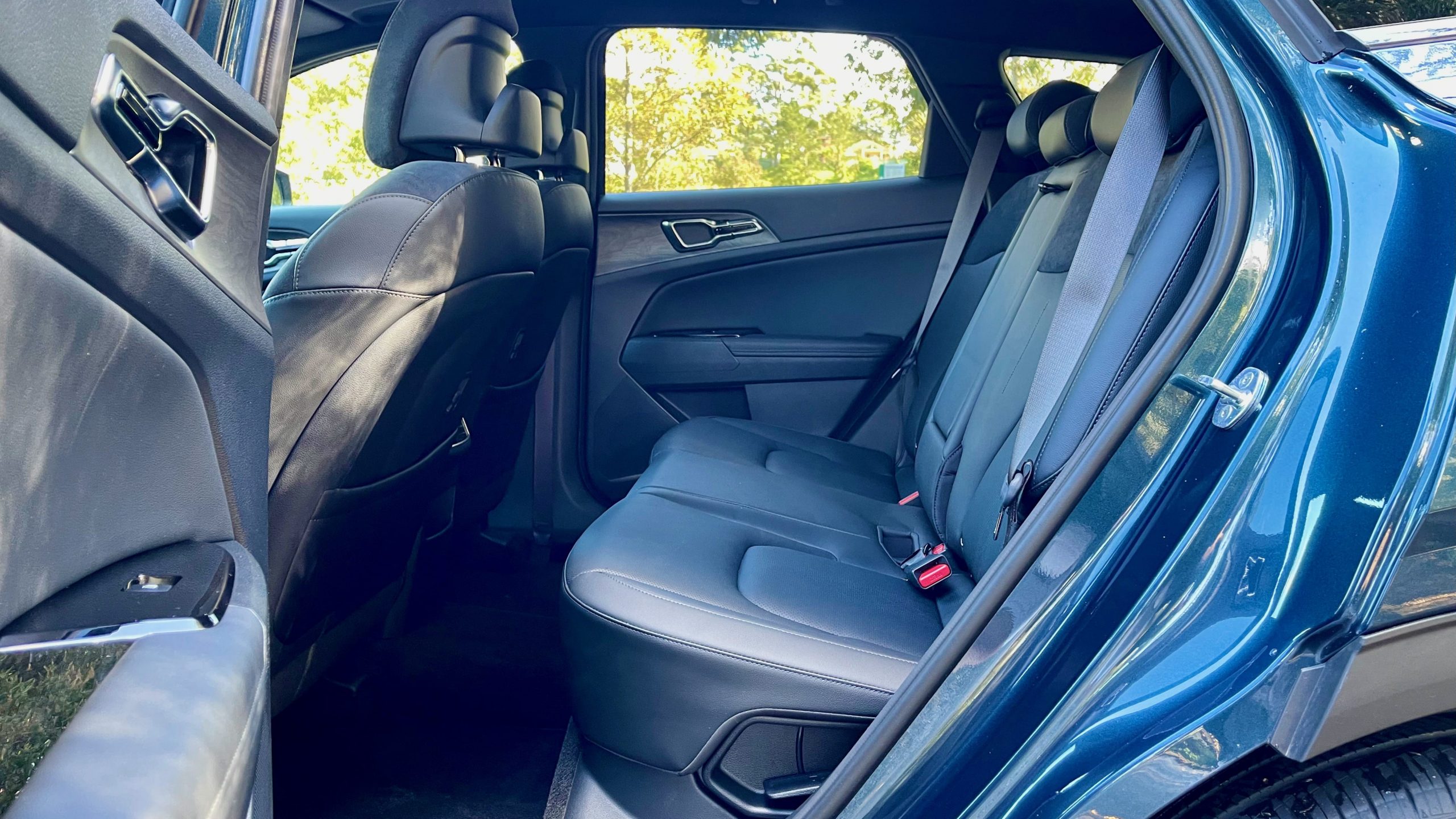
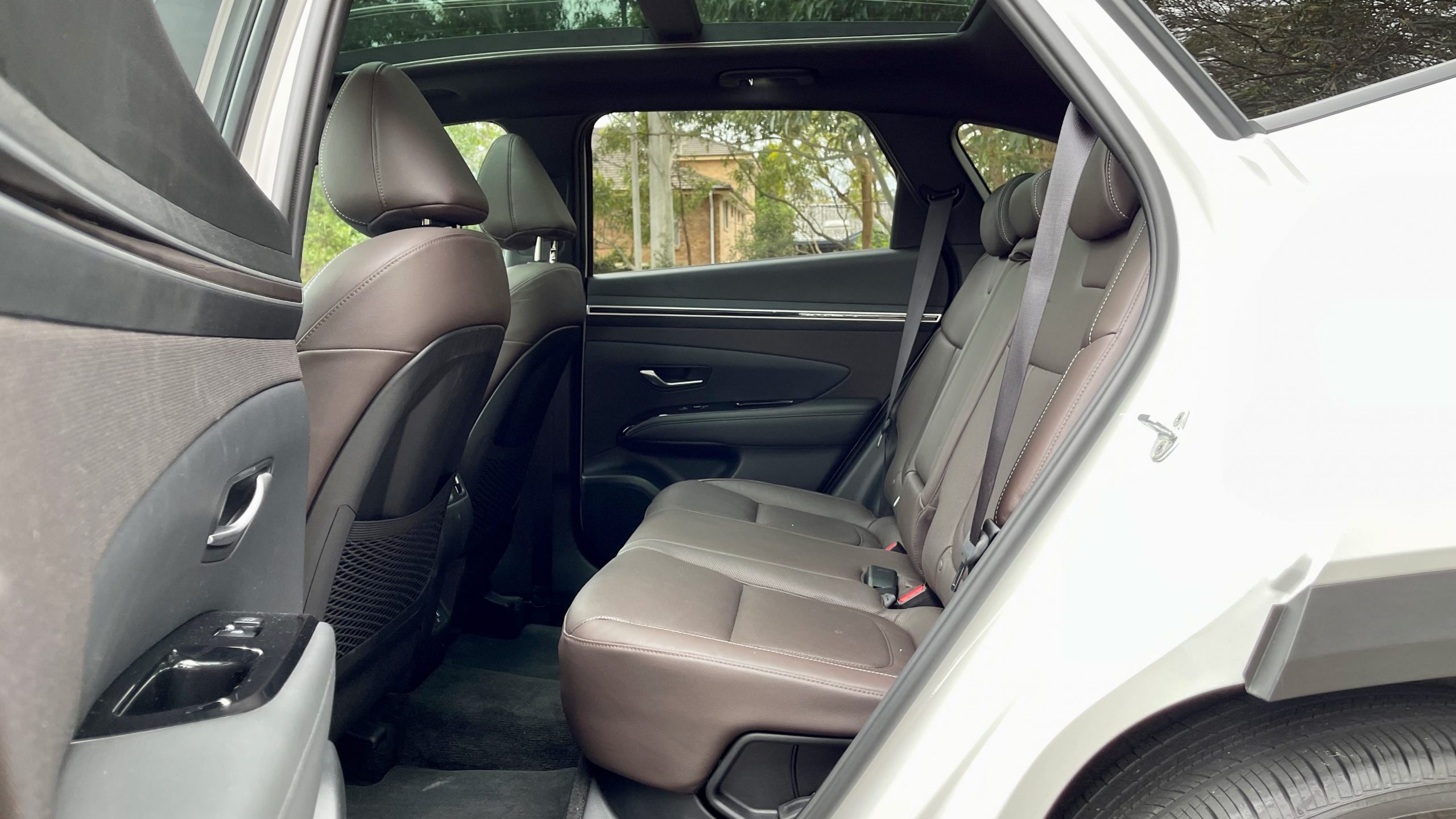
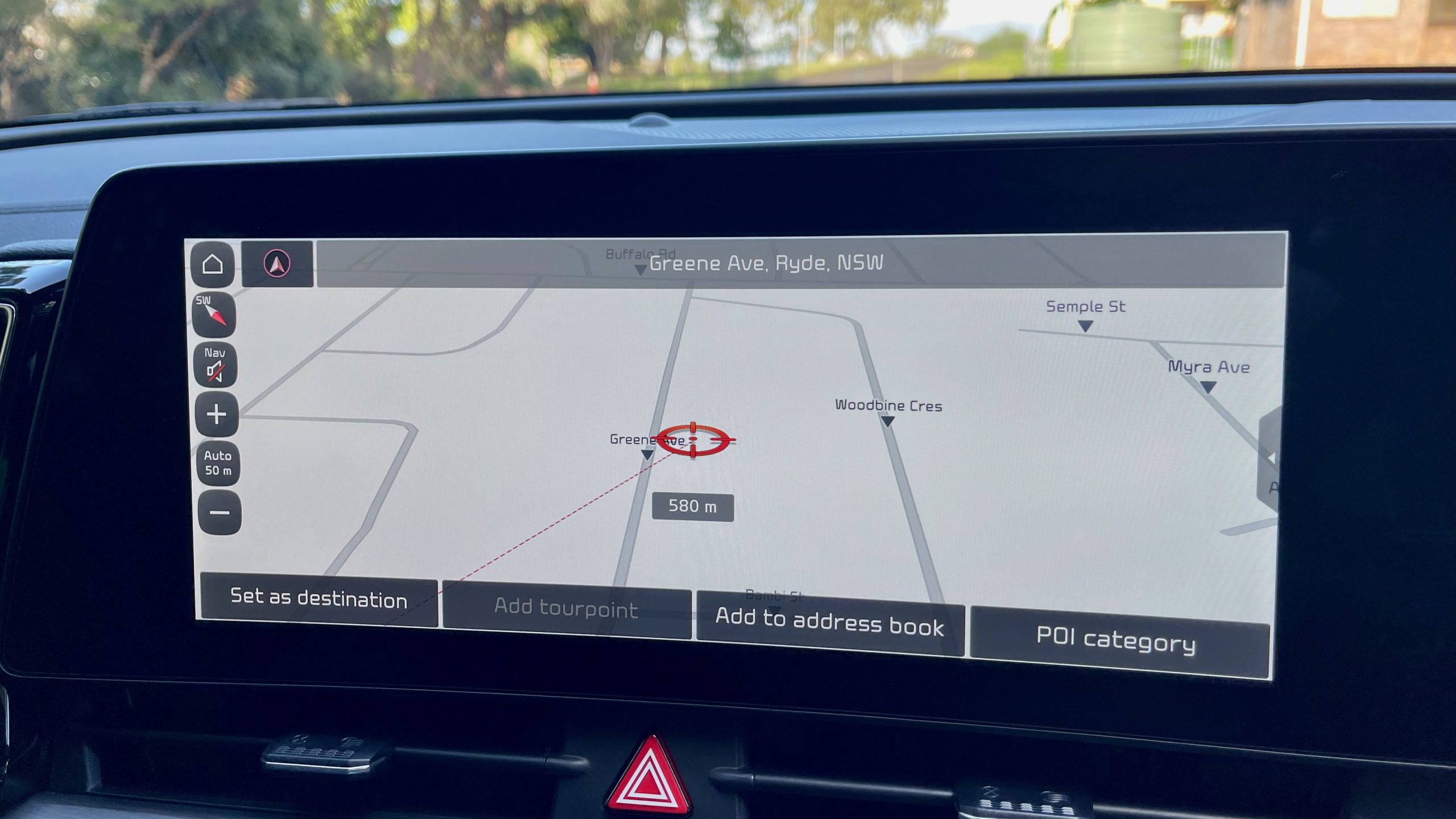
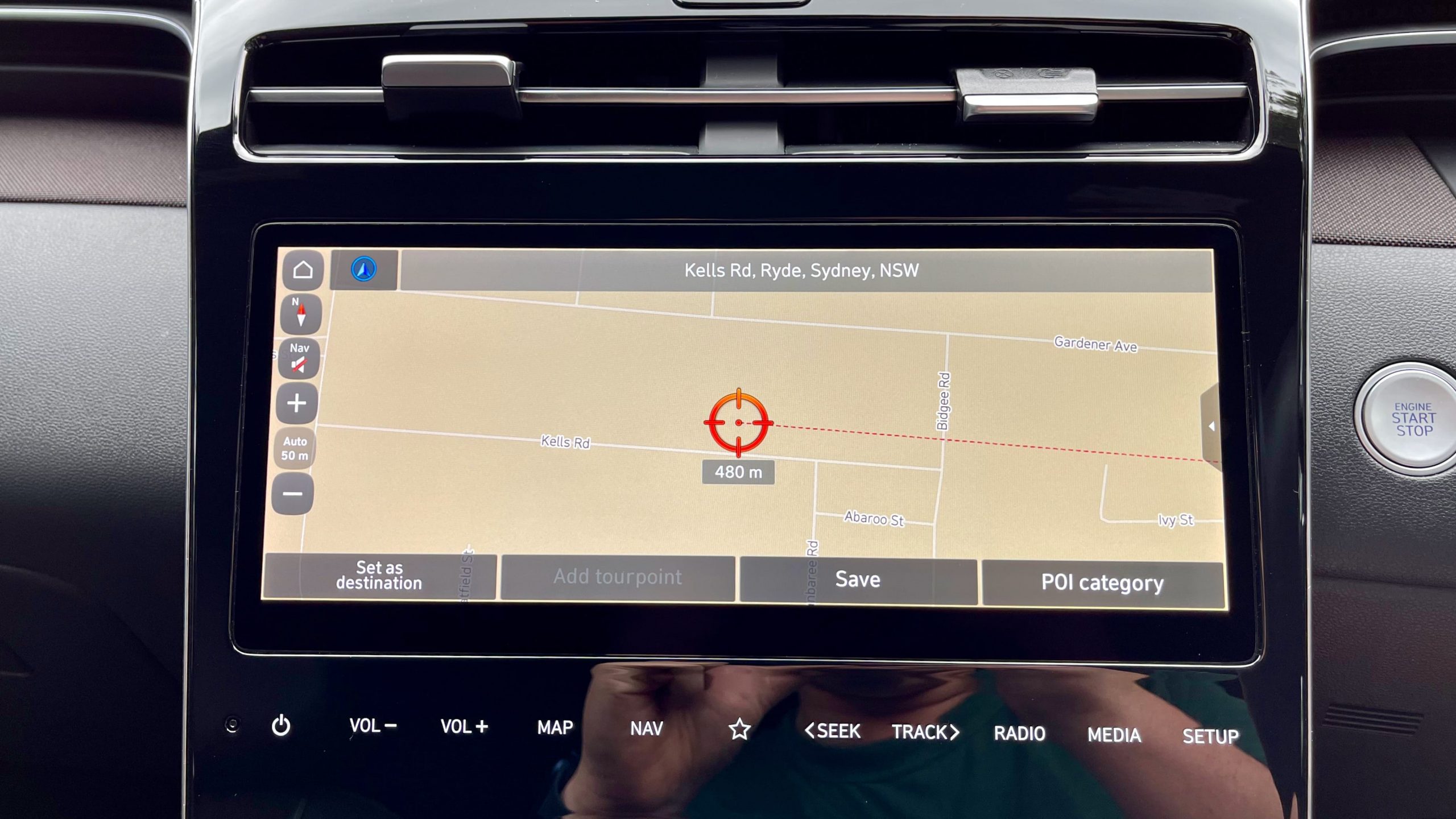
Getting into the rear of the Kia and Hyundai is easy thanks wide opening doors. The backrests on both cars are adjustable and there is a centre arm rest to ensure rear passengers are comfortable. The Tucson has rear heated seats – which the Sportage misses out on – but both cars have map pockets, door pockets, rear air vents, cupholders and two USB ports (USB-C in the Sportage and USB-A in the Tucson).
Both cars have power tailgates to reveal the rear cargo space. There is 543-litres of cargo space in the \ Sportage and 539-litres of cargo space in the Tucson with the rear seat in space. Fold the rear seats down and that opens the space up to 1,829L in the Kia and 1,860L in the Hyundai.
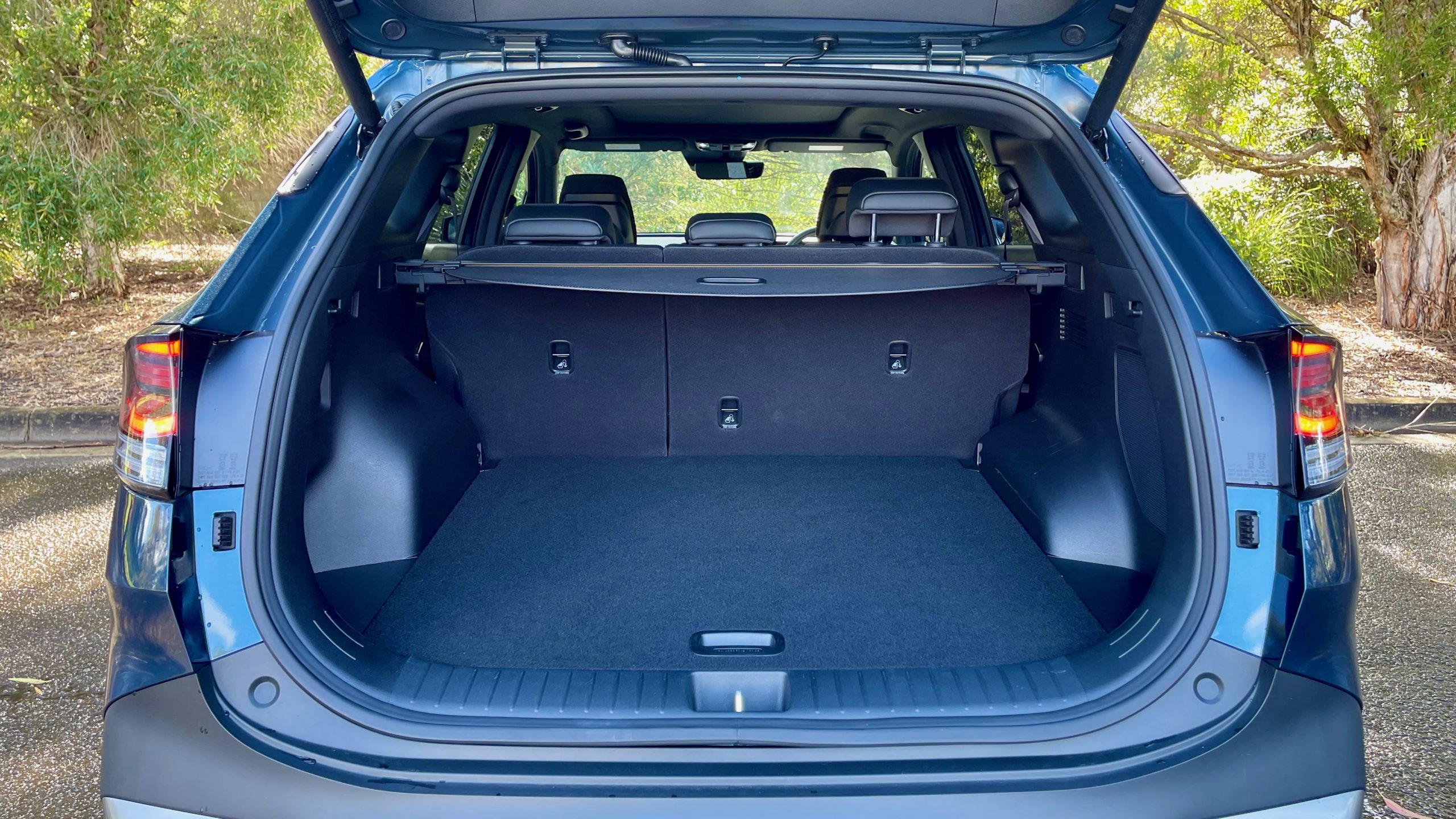
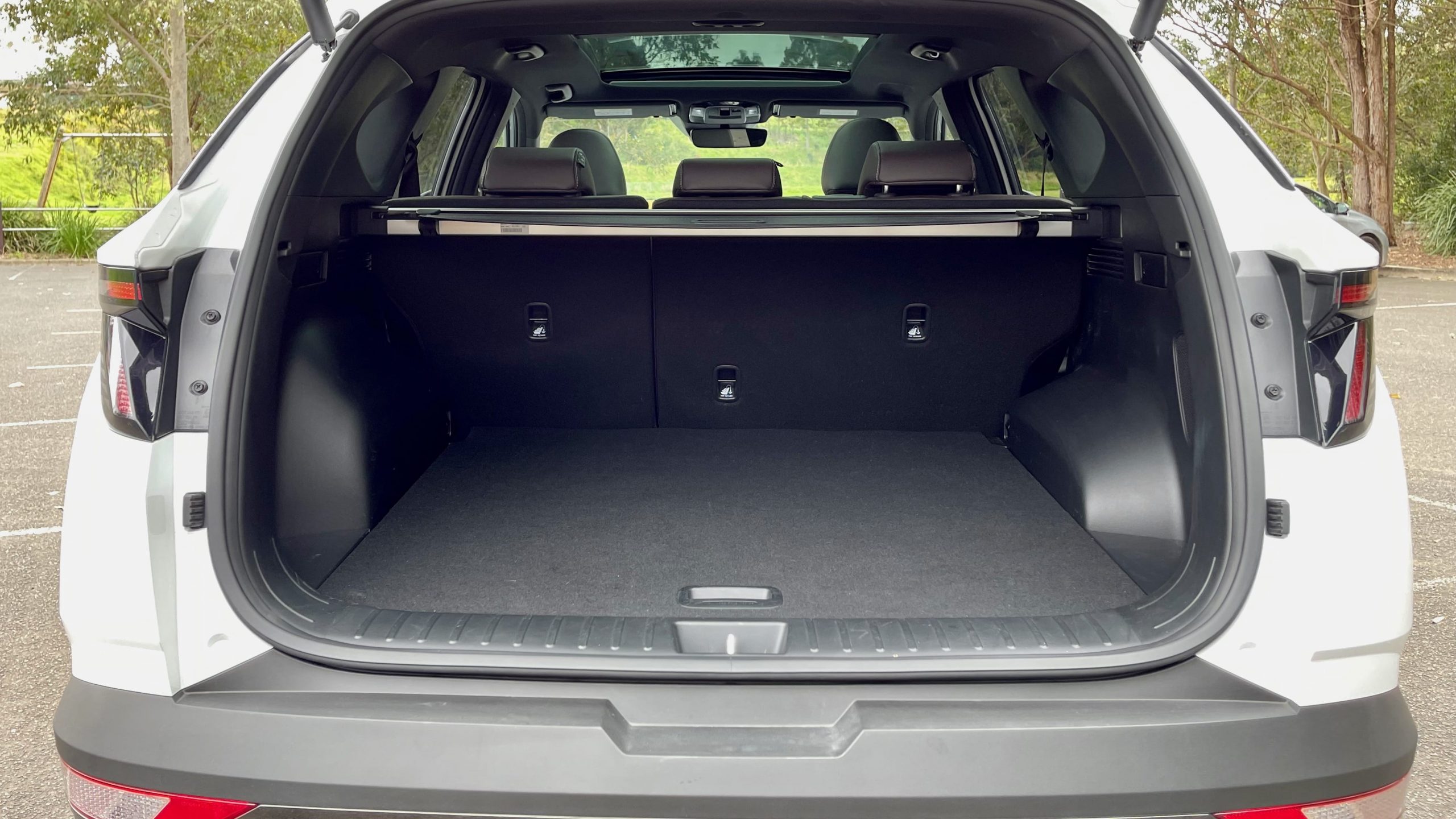
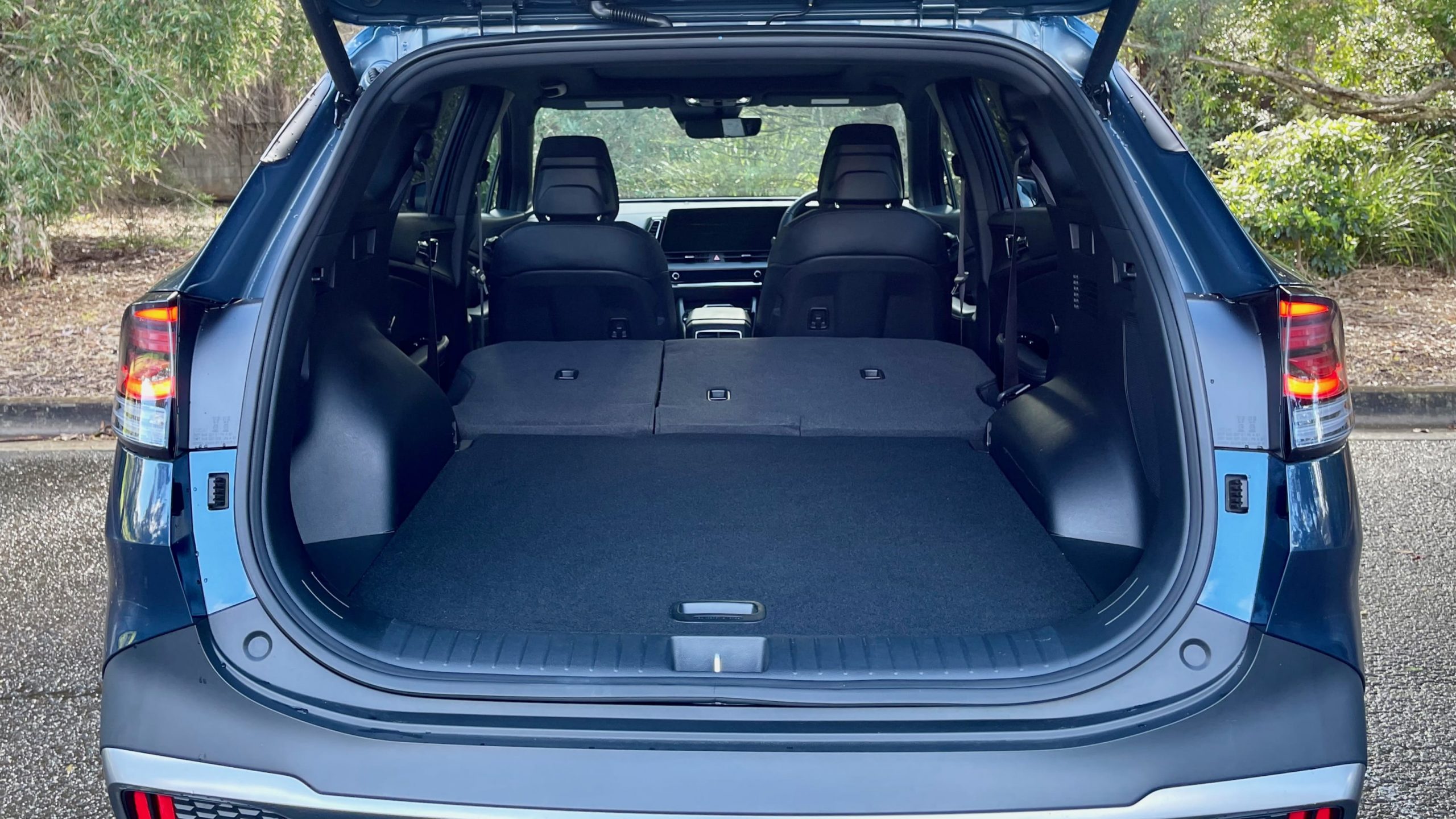
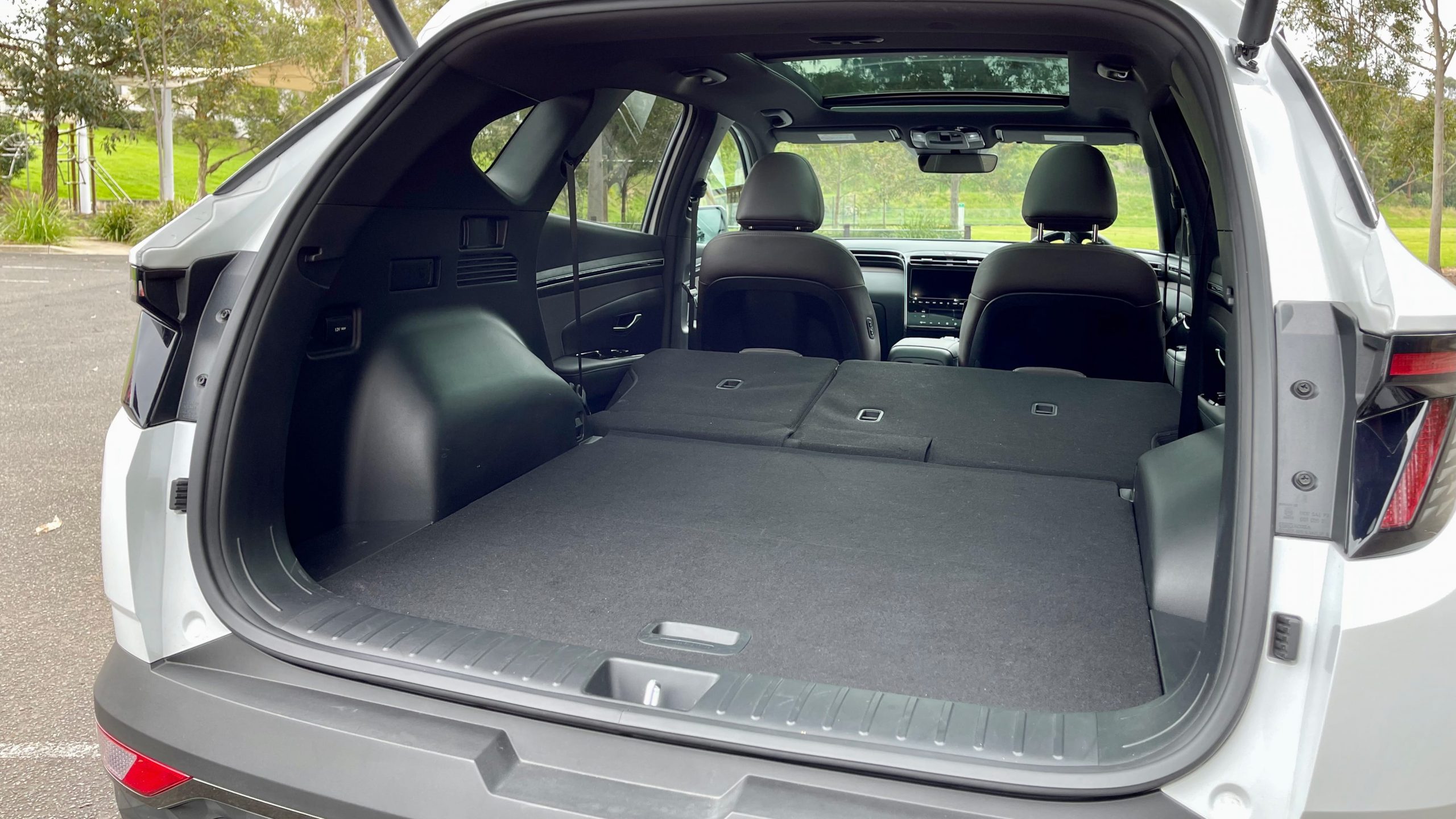
Both cars have a 12-volt charger, cargo hold down nets, hooks and cargo covers. Crucially for a lot of country buyers as well, both cars have full-size alloy spare wheels.
Interior & Practicality winner: 2022 Hyundai Tucson Highlander diesel
Service & Warranty:
The 2022 Hyundai Tucson comes with the brand’s five-year/unlimited kilometre warranty, which is overshadowed by Kia’s seven-year/unlimited kilometre warranty which comes with the Sportage. Both cars come with 12 months of roadside assistance that is extended at every scheduled dealer service by a further 12 months for up to five years for the Hyundai and seven years for the Kia. Both cars have the same service intervals: 12 months or 15,000km. Servicing the Kia Sportage GT-Line Diesel over the span of five years/75,000km will set owners back $2,512 ($502.40 per service). In comparison over the same period the Hyundai Tucson Highlander Diesel will cost just $1,875 ($375 per service).
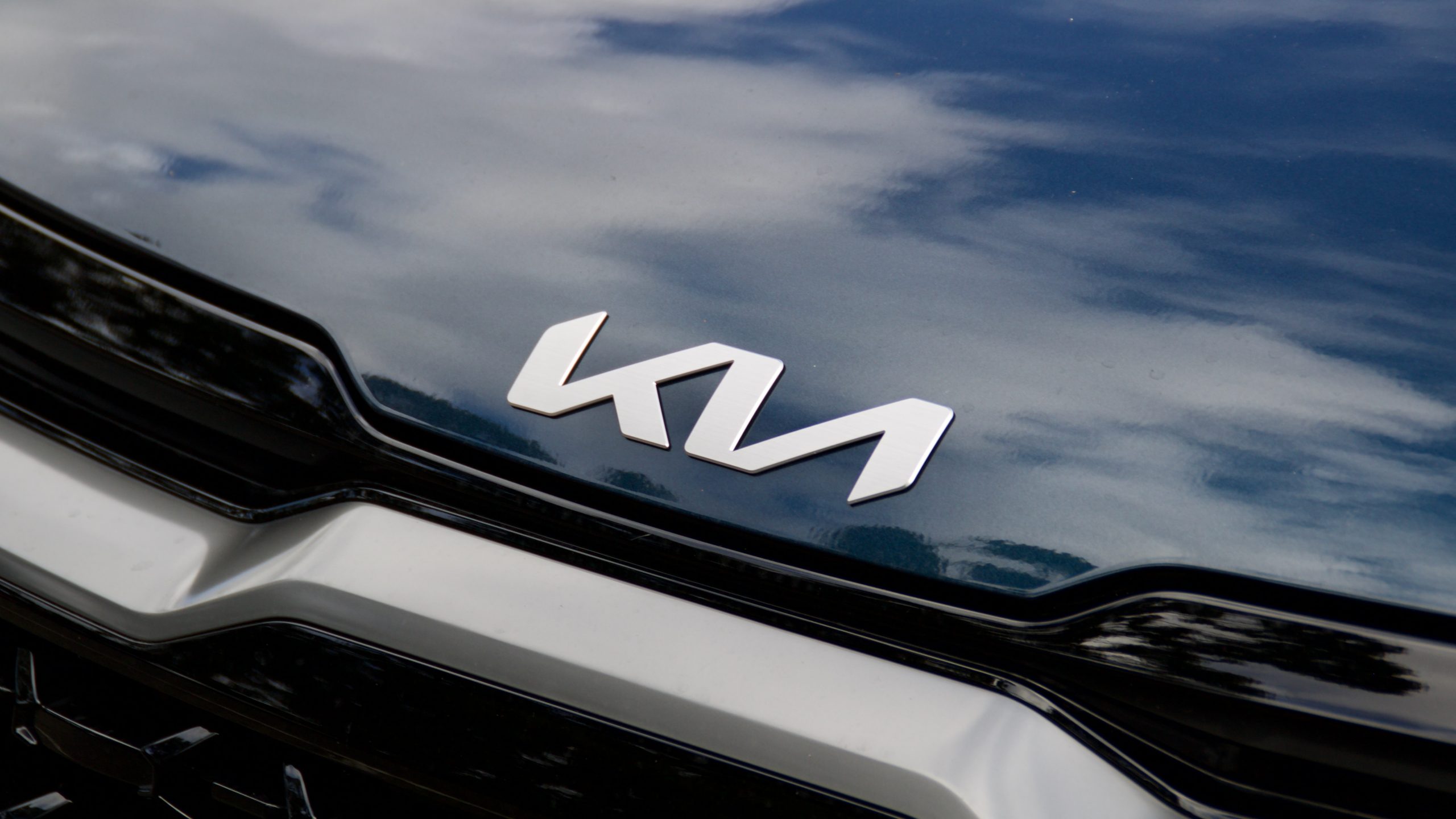
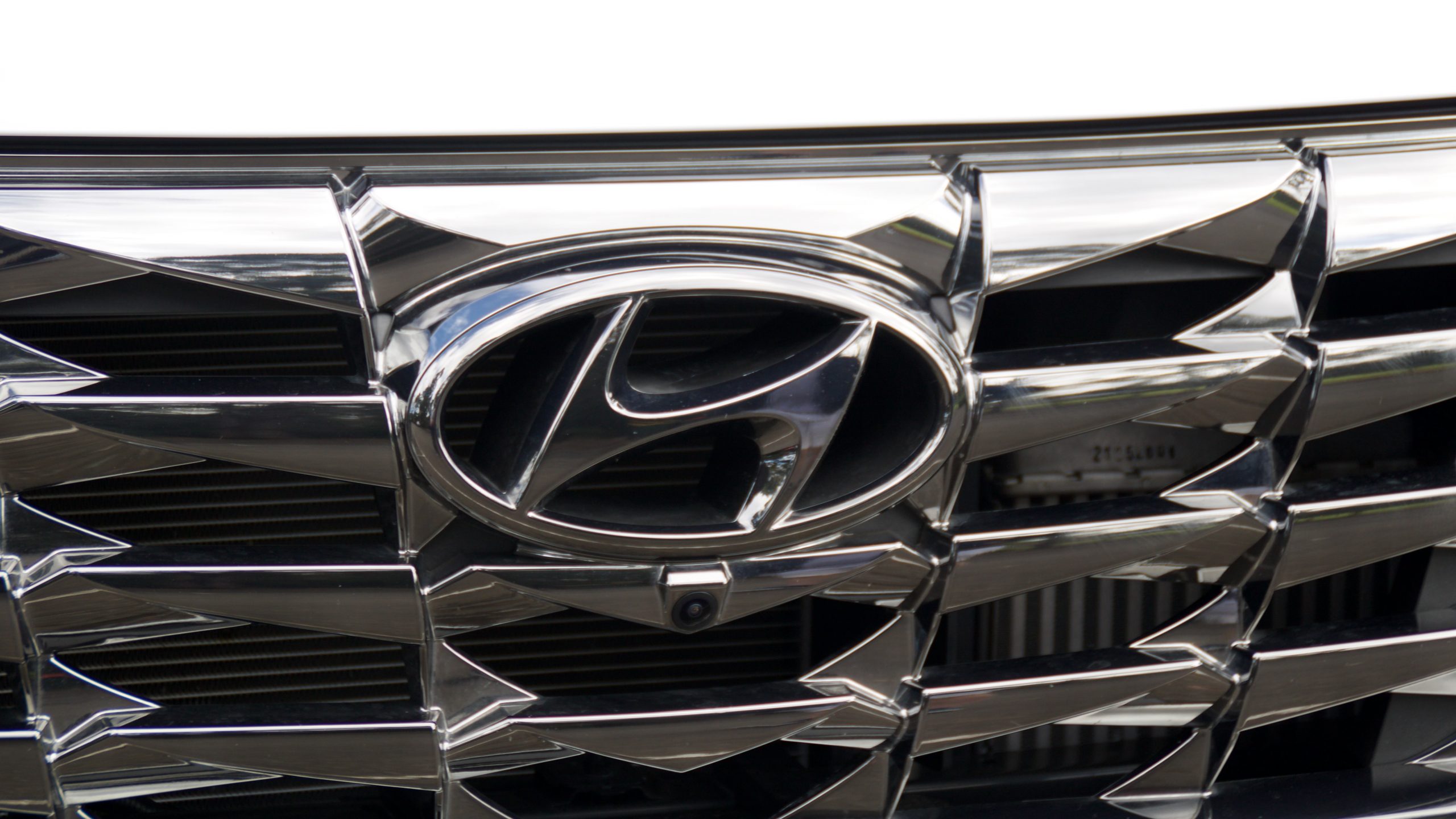
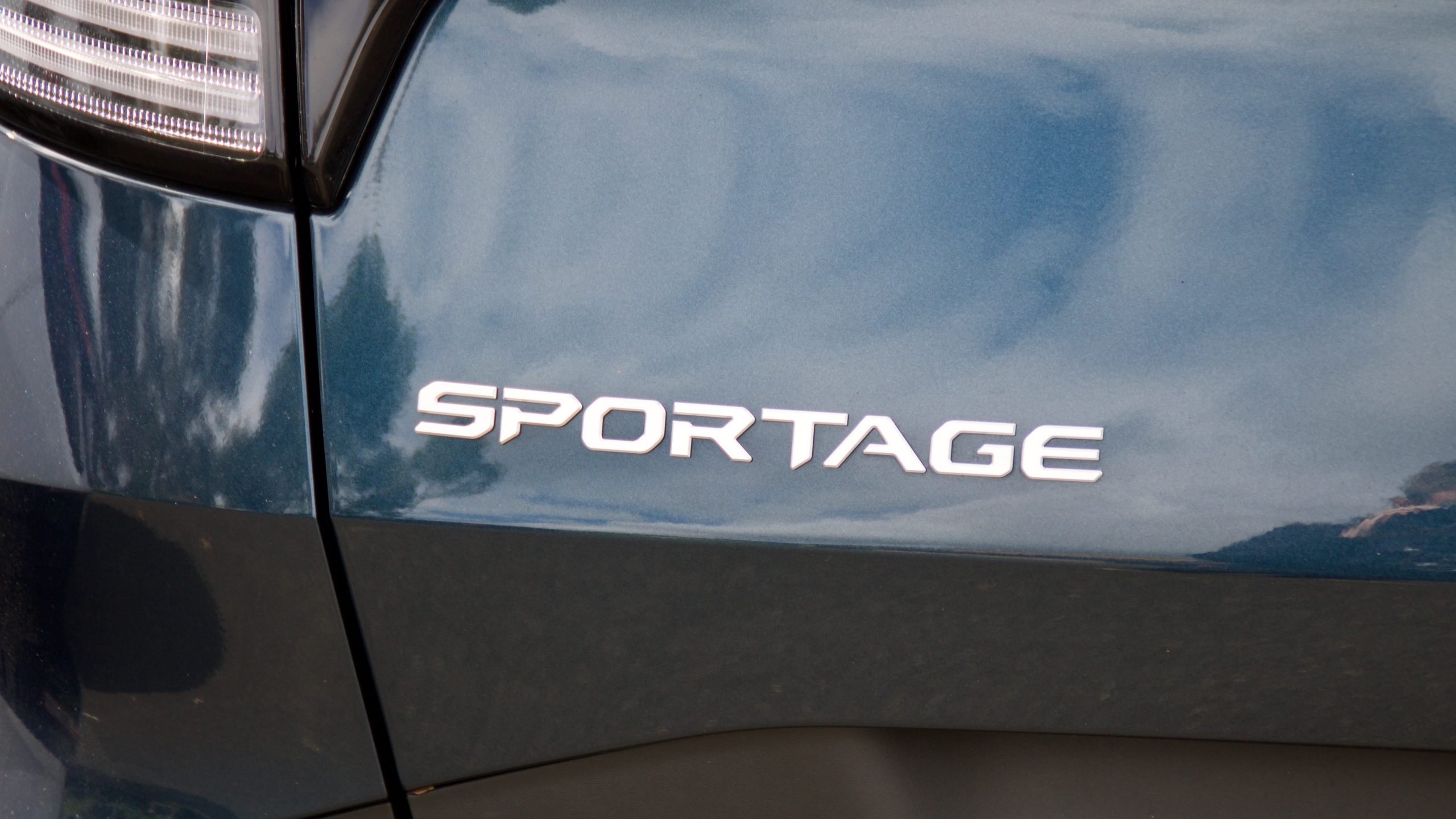
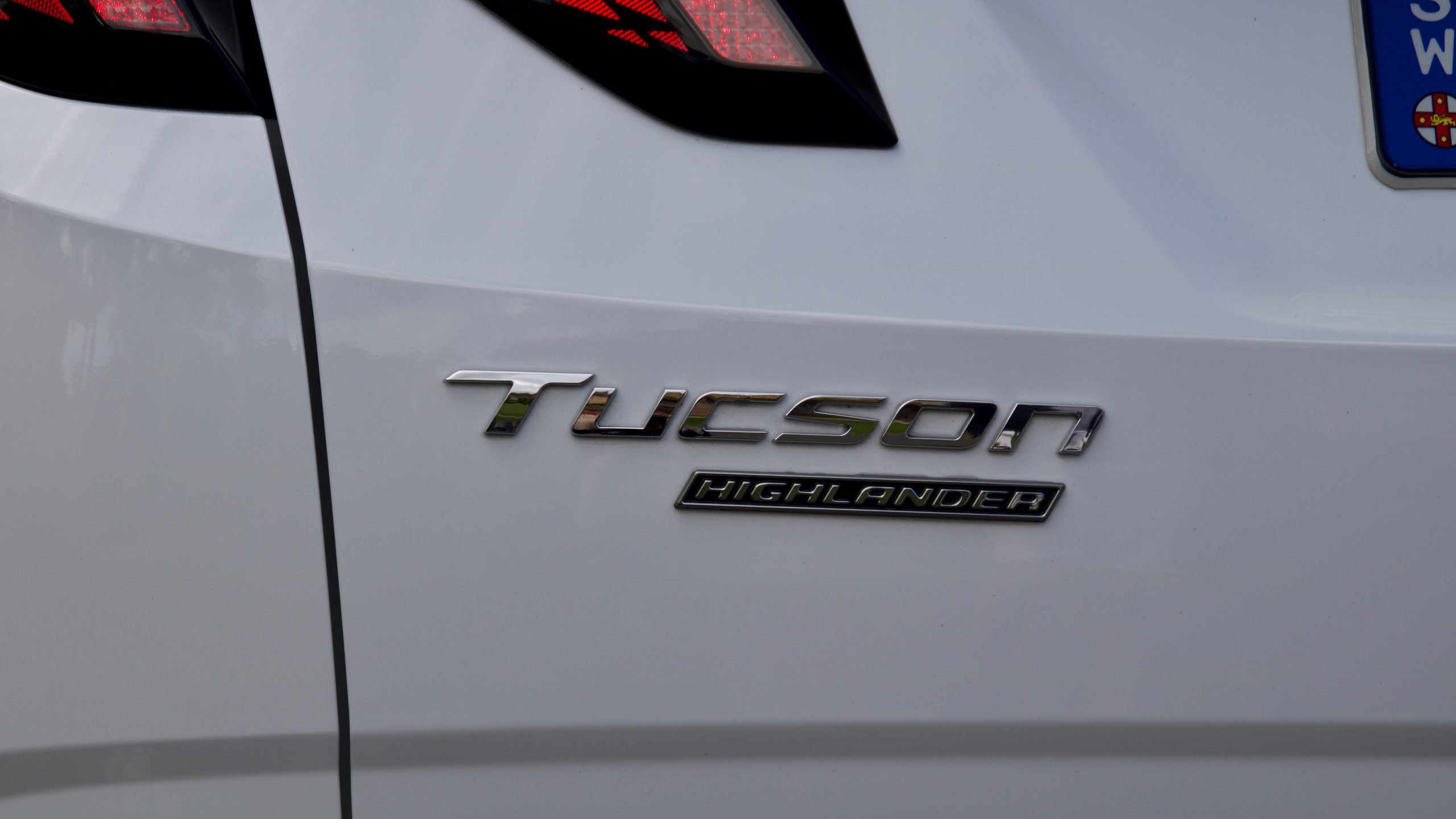
So the Kia has two extra years of warranty and roadside assistance but the Hyundai is significantly cheaper to service. Because of this we think both in this SUV comparison are tied, though if we had to lean towards a car it would be the Hyundai, due to its cheaper servicing.
Service & Warranty winner: 2022 Hyundai Tucson Highlander diesel
Which is the winner: 2022 Hyundai Tucson Highlander Diesel or 2022 Kia Sportage GT-Line Diesel?
It is safe to say that both Kia and Hyundai have both made exceptional SUVs that offer efficiency, comfort and a long list of standard equipment. But the big question is what would we drive away in? Well, the Tucson has slightly more equipment but it misses out on two years of warranty that the Sportage has.
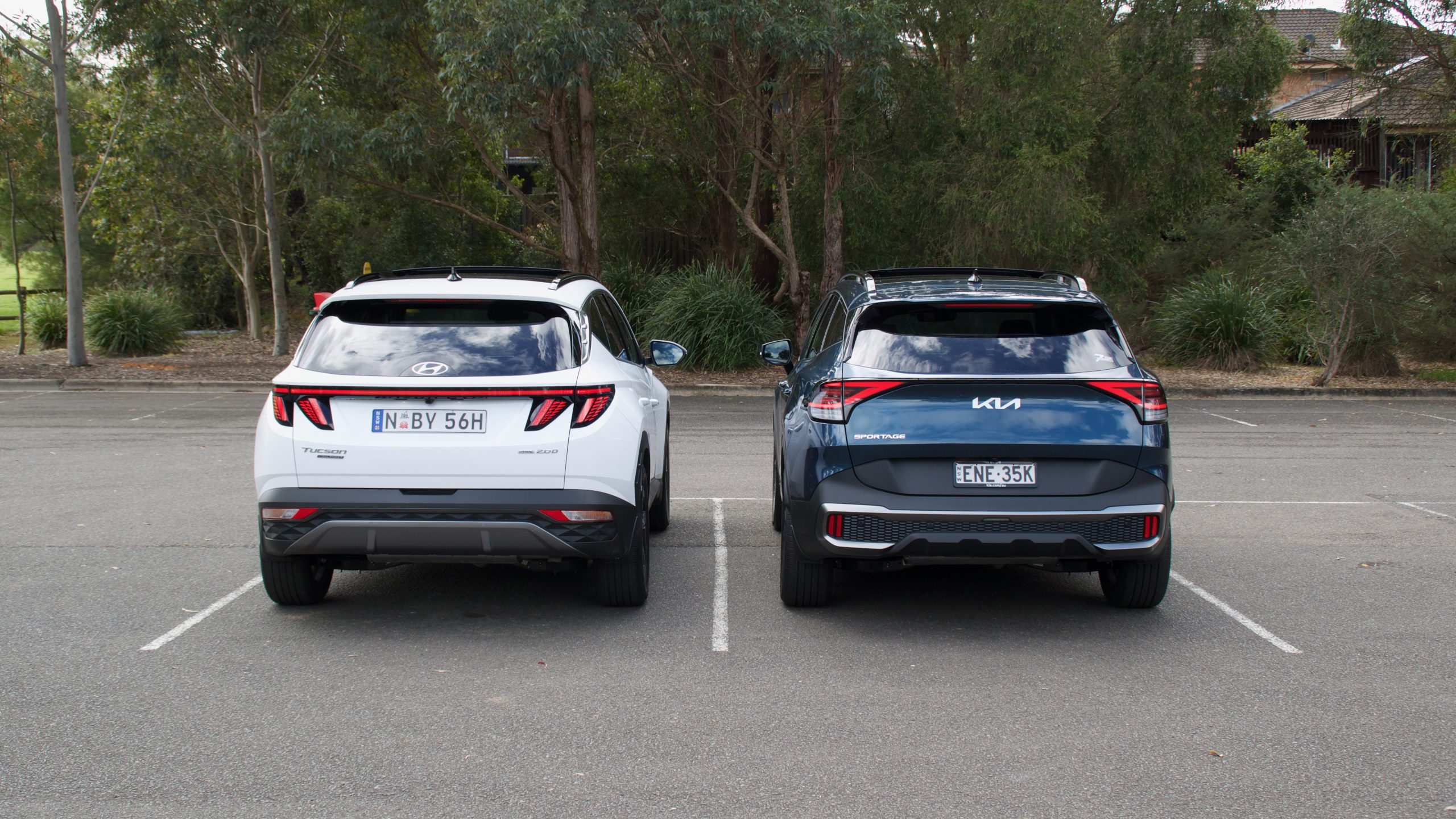
It’s a question that divided the DiscoverAuto team but after a lot of discussion, if both were in front of us and we had to choose one it would have to be the 2022 Hyundai Tucson Highlander Diesel. It was comfortable, is cheaper to service, has more equipment and though it is $40 more to buy, it’s slightly better value for money. But regardless of which pair you choose, both are excellent options in the medium SUV segment and both are worth close consideration.
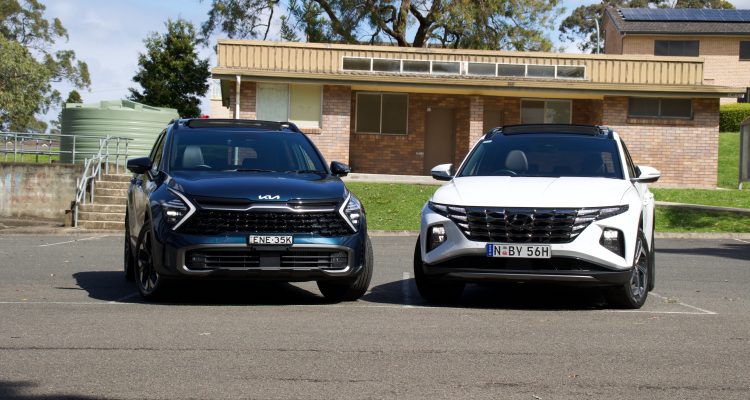
Leave a Reply